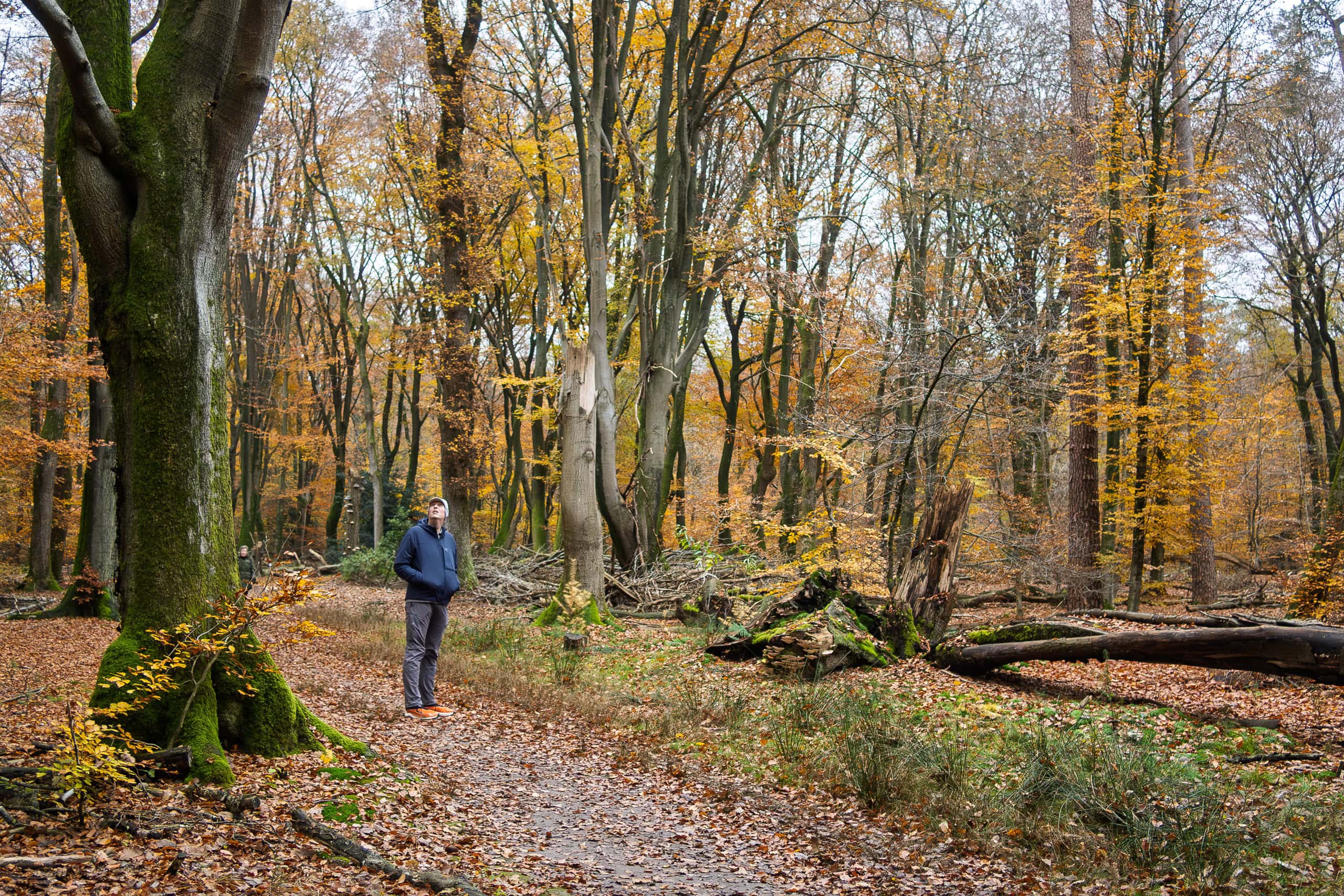
Autumn in the Netherlands always feels fleeting. One week the trees are golden, and the next the wind and rain have swept everything bare. On one of those quiet November days, when the air was crisp and the light already turning wintry, we set out for a short walk in the woods — De Duintjes Trail in the village of Garderen.
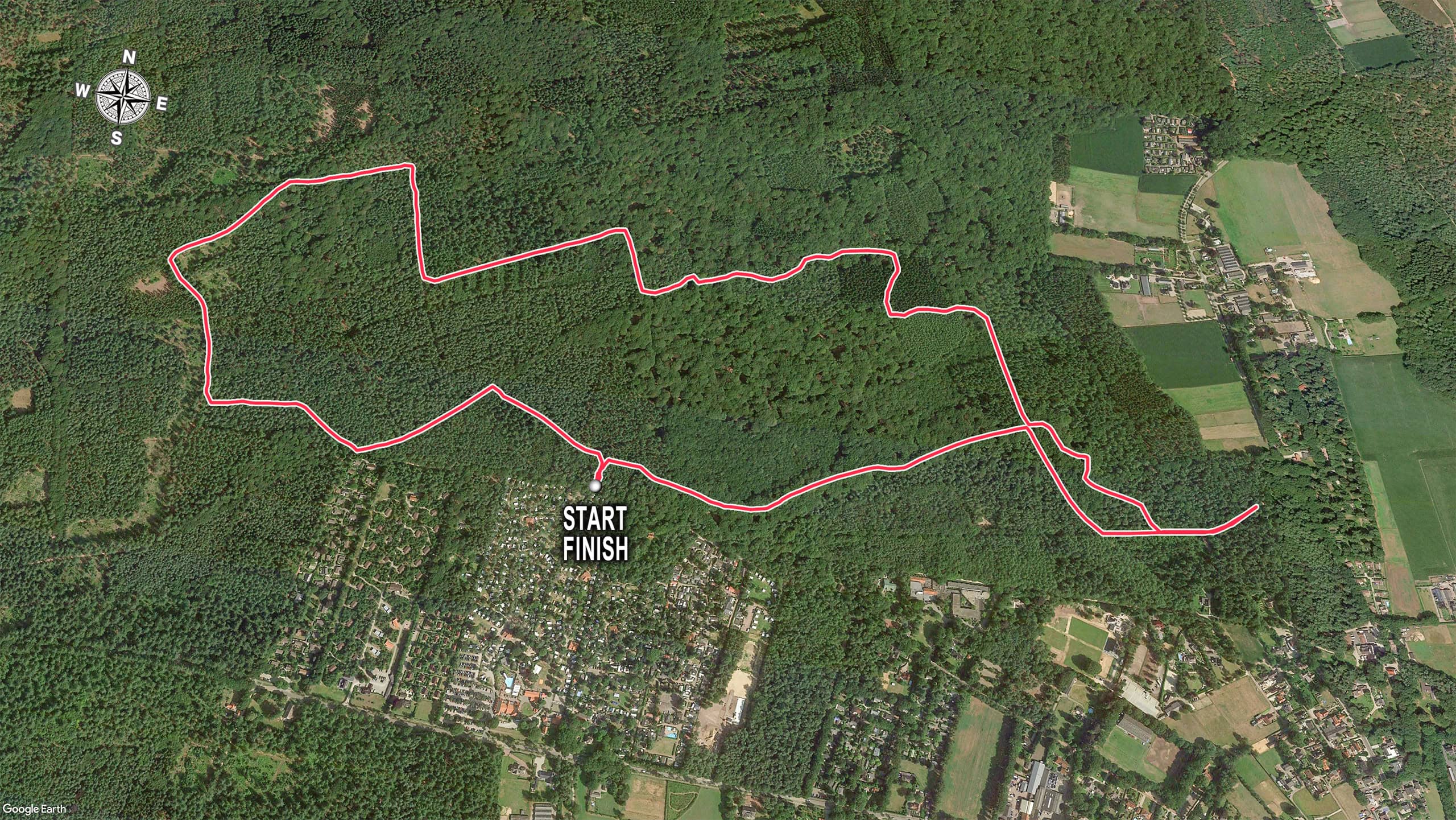
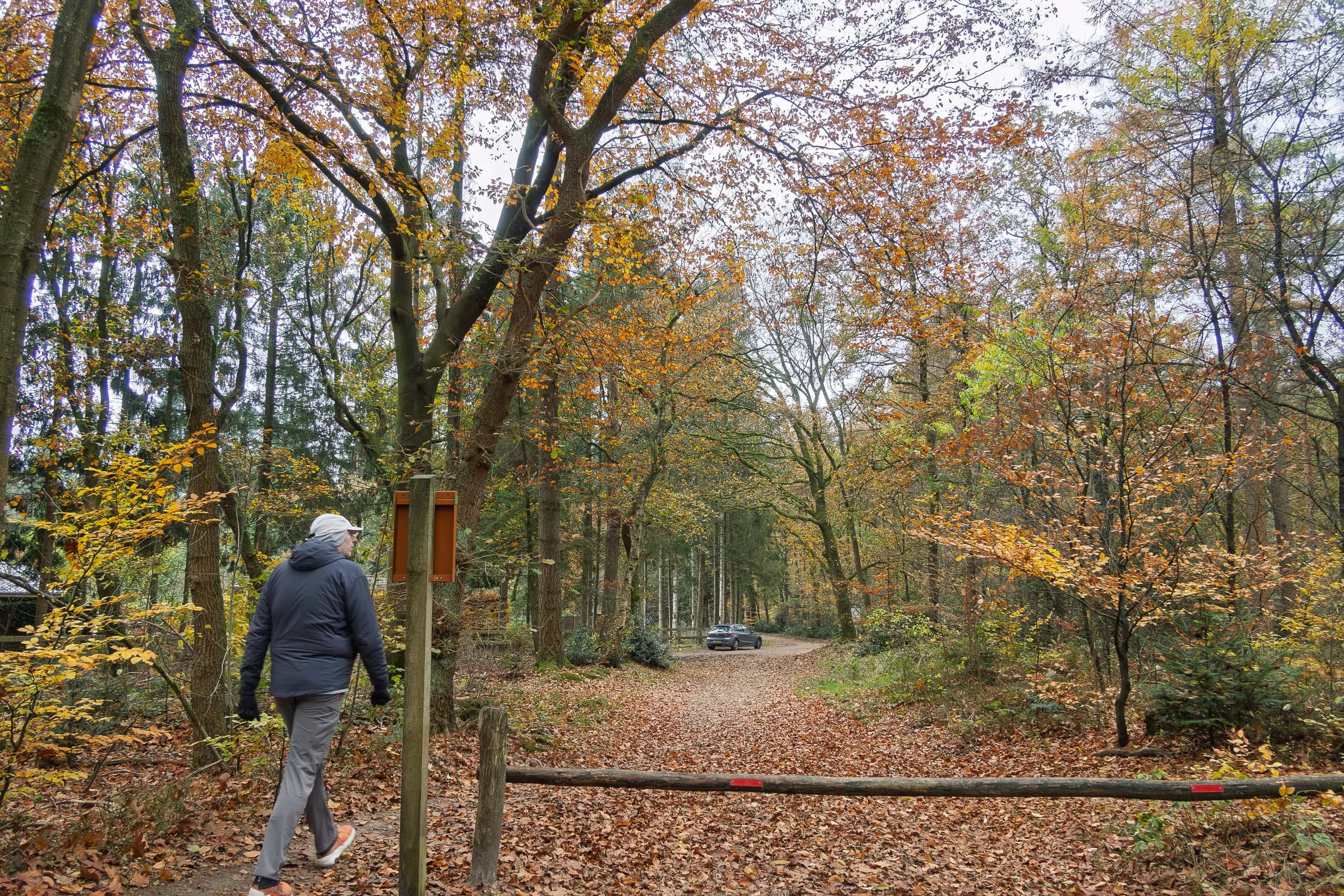
In the heart of the Netherlands stretches a vast forest region. Within it lies a small village called Garderen, where we walked De Duintjes Trail.
Daylight saving time had ended, and the weather had finally settled into what I can only describe as “typical Dutch November.” Cloudy and cold almost every day, rain falling at least once daily. Autumn had vanished in a blink, and winter felt just around the corner. The thermometer showed 9°C that day, but with the wind it felt closer to four.
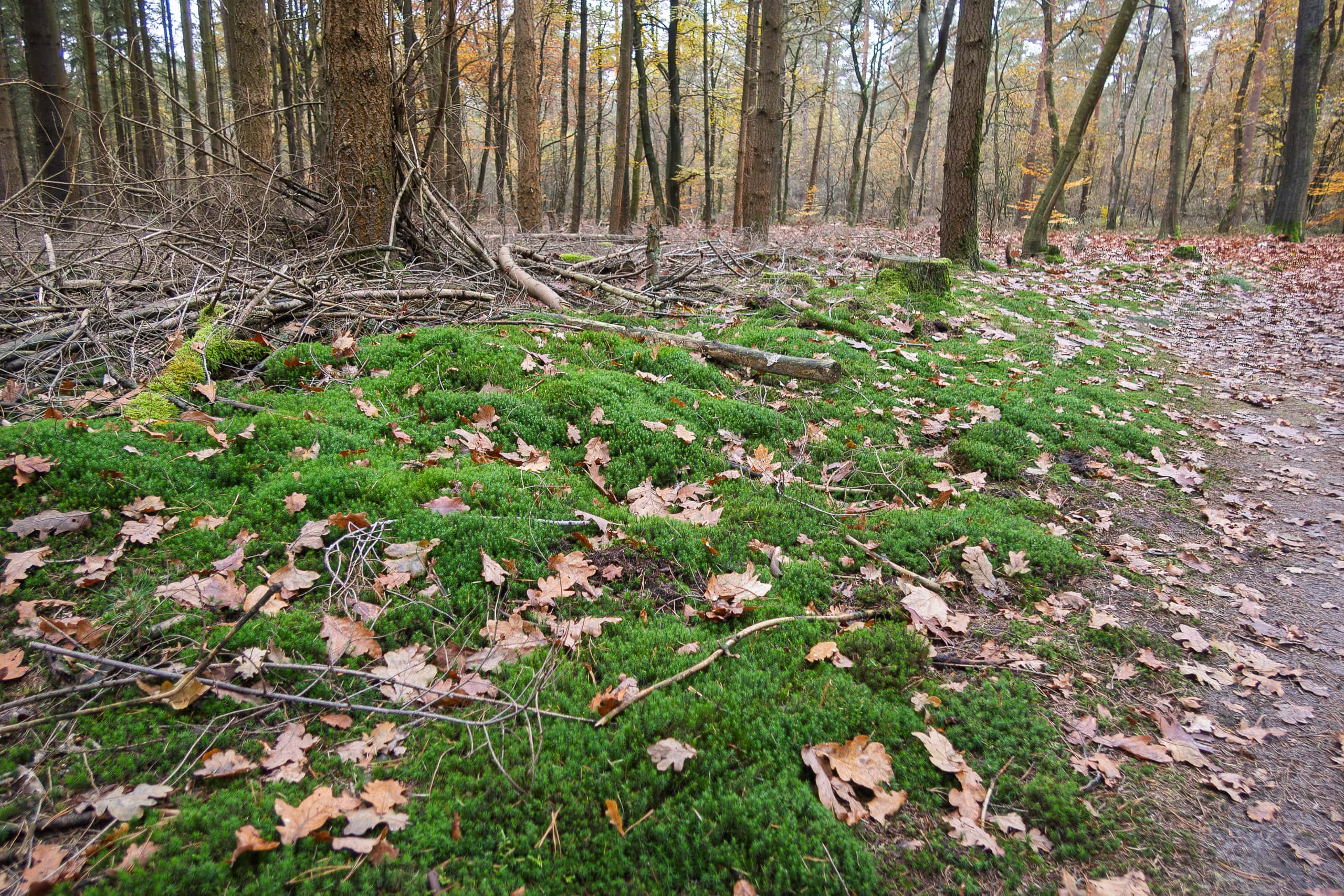
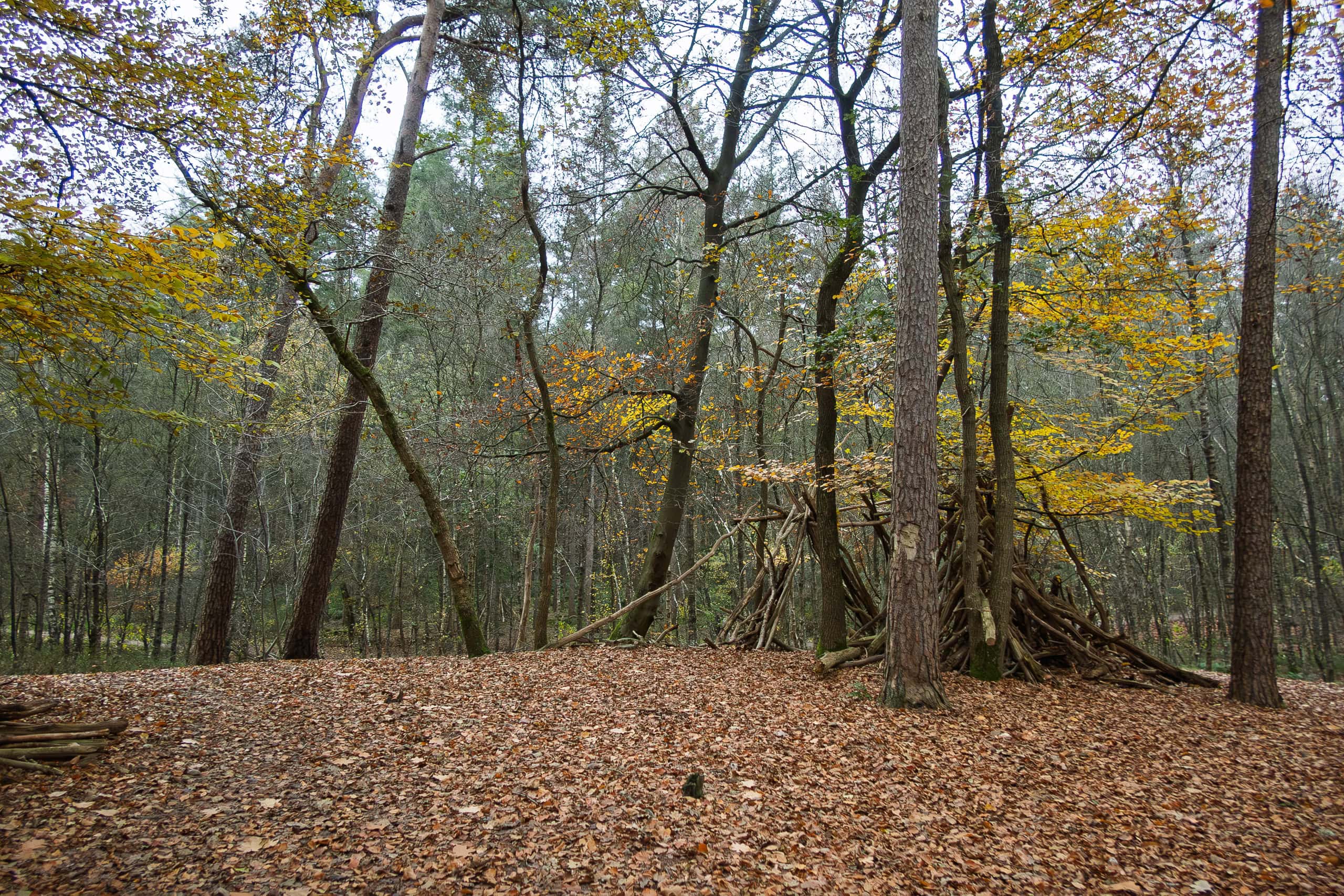
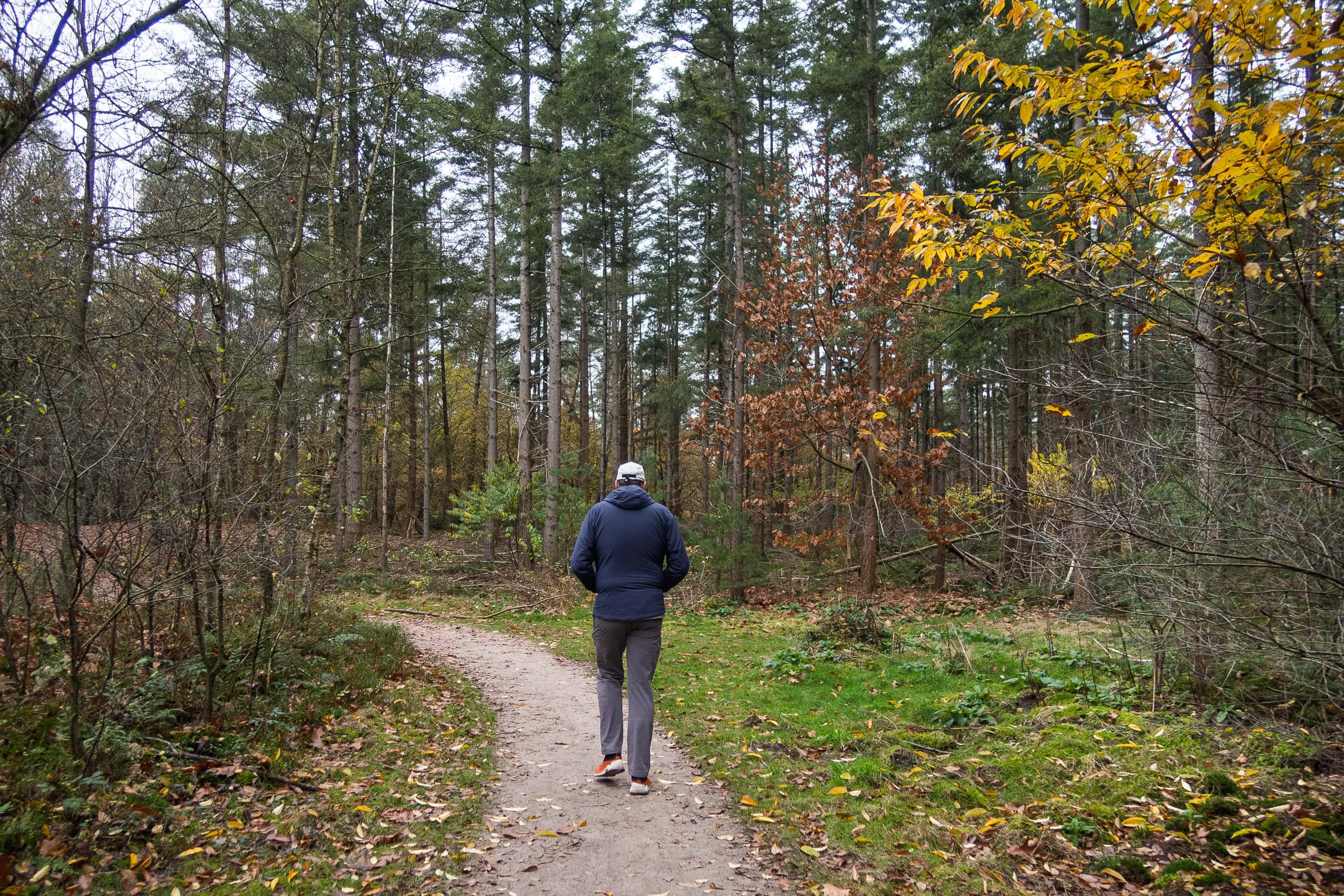
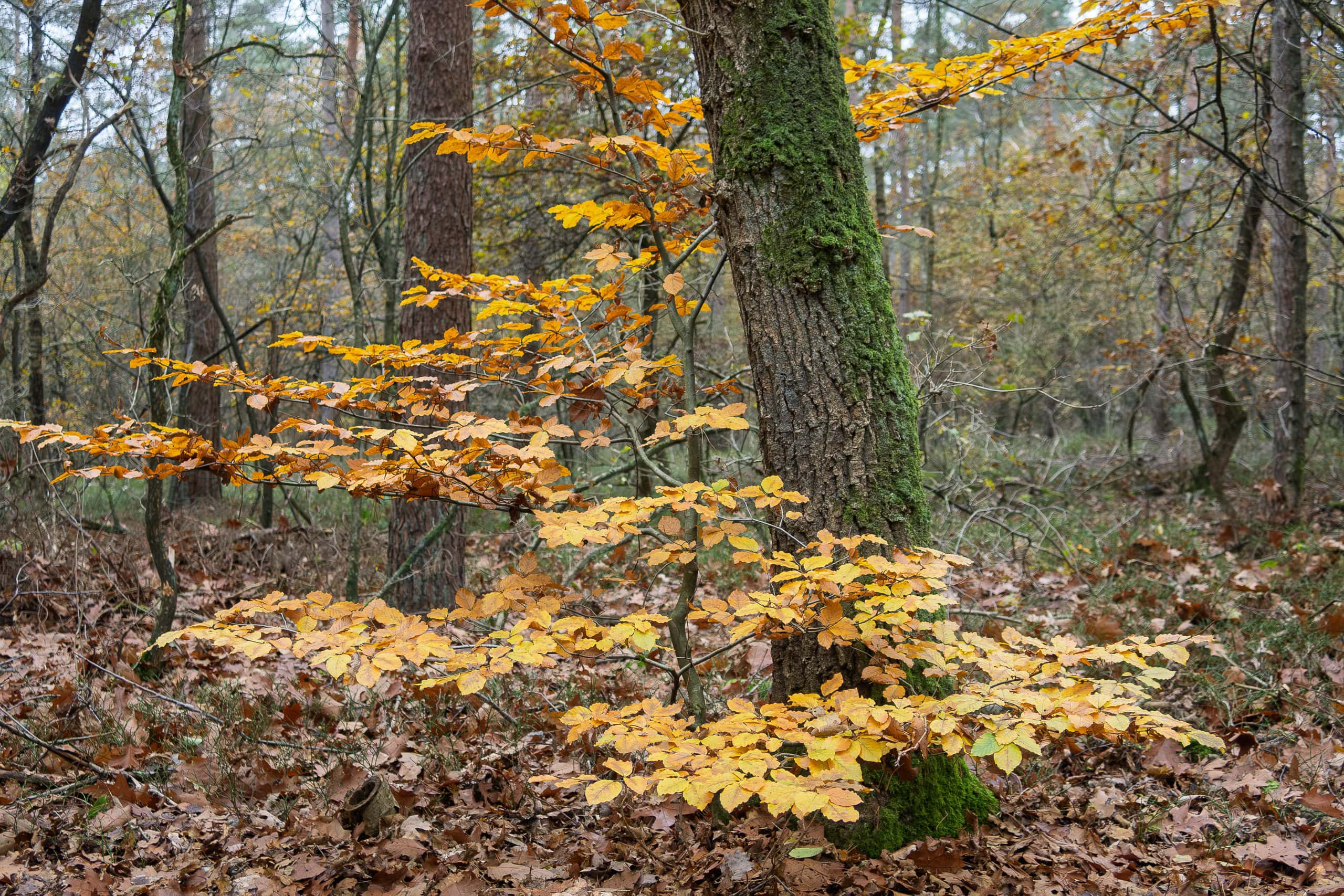
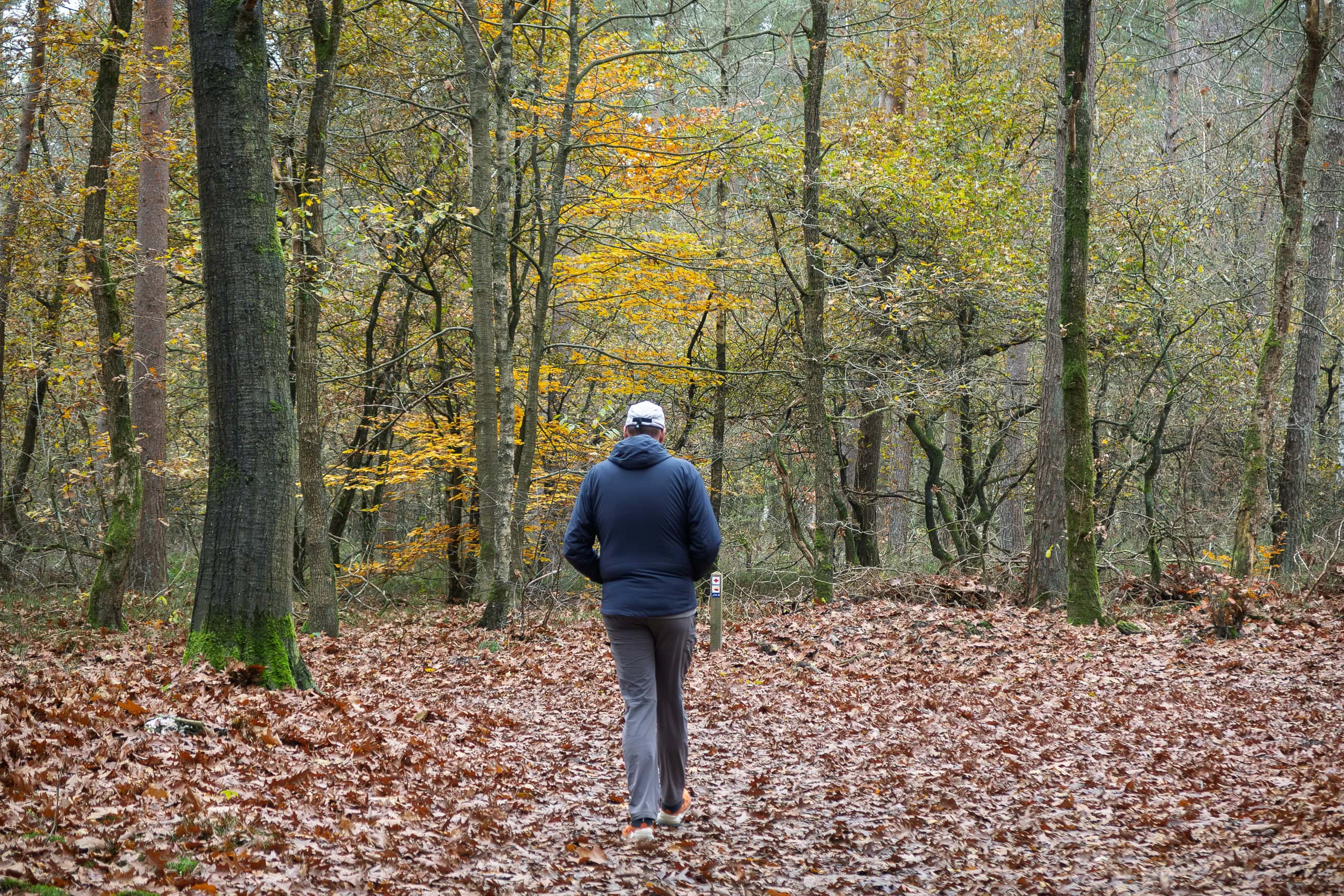
De Duintjes means “The Little Dunes” in Dutch — duin meaning dune, -je adding the nuance of “small,” and the plural -s suggesting “many.” So perhaps something like “a place with many little dunes.”
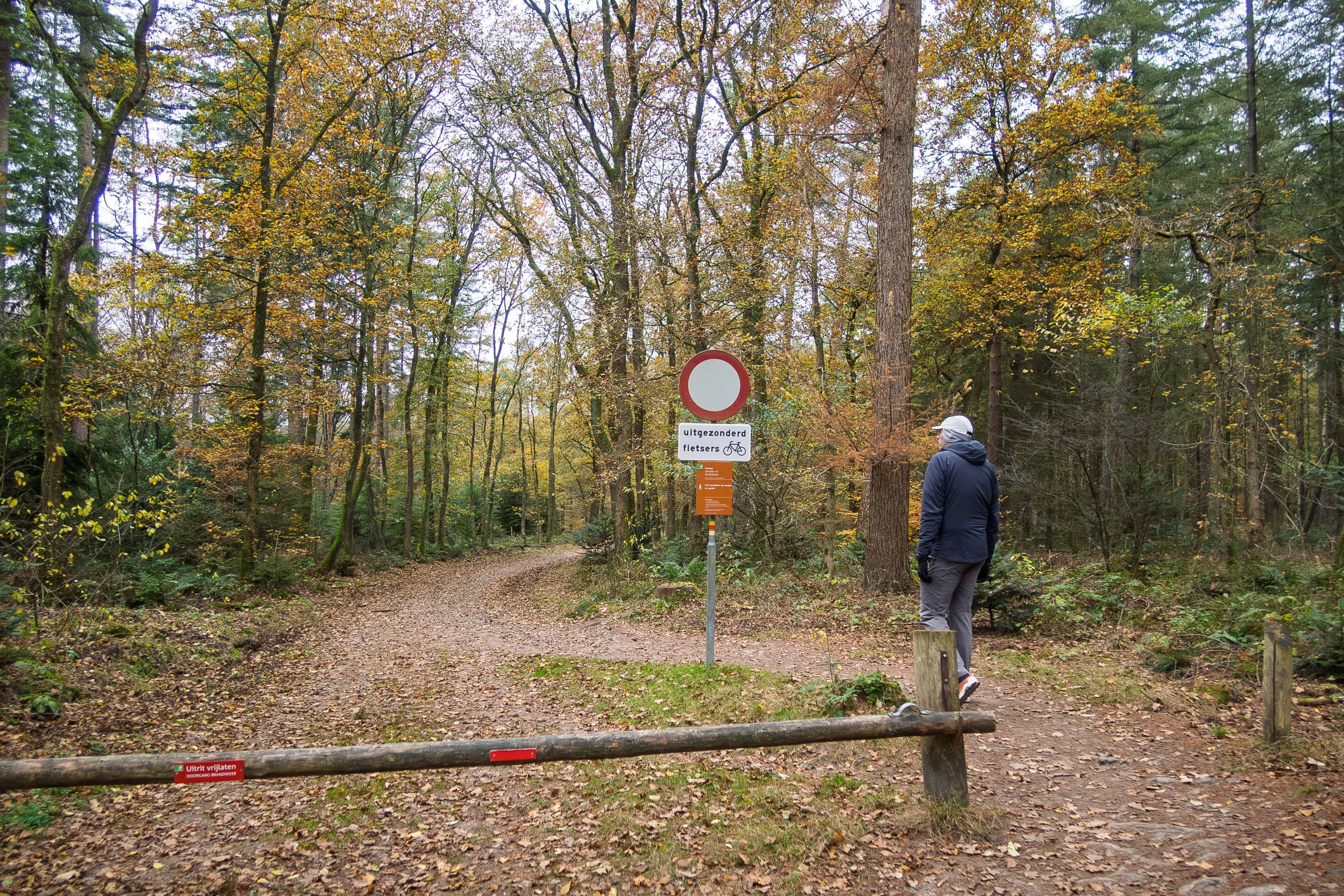
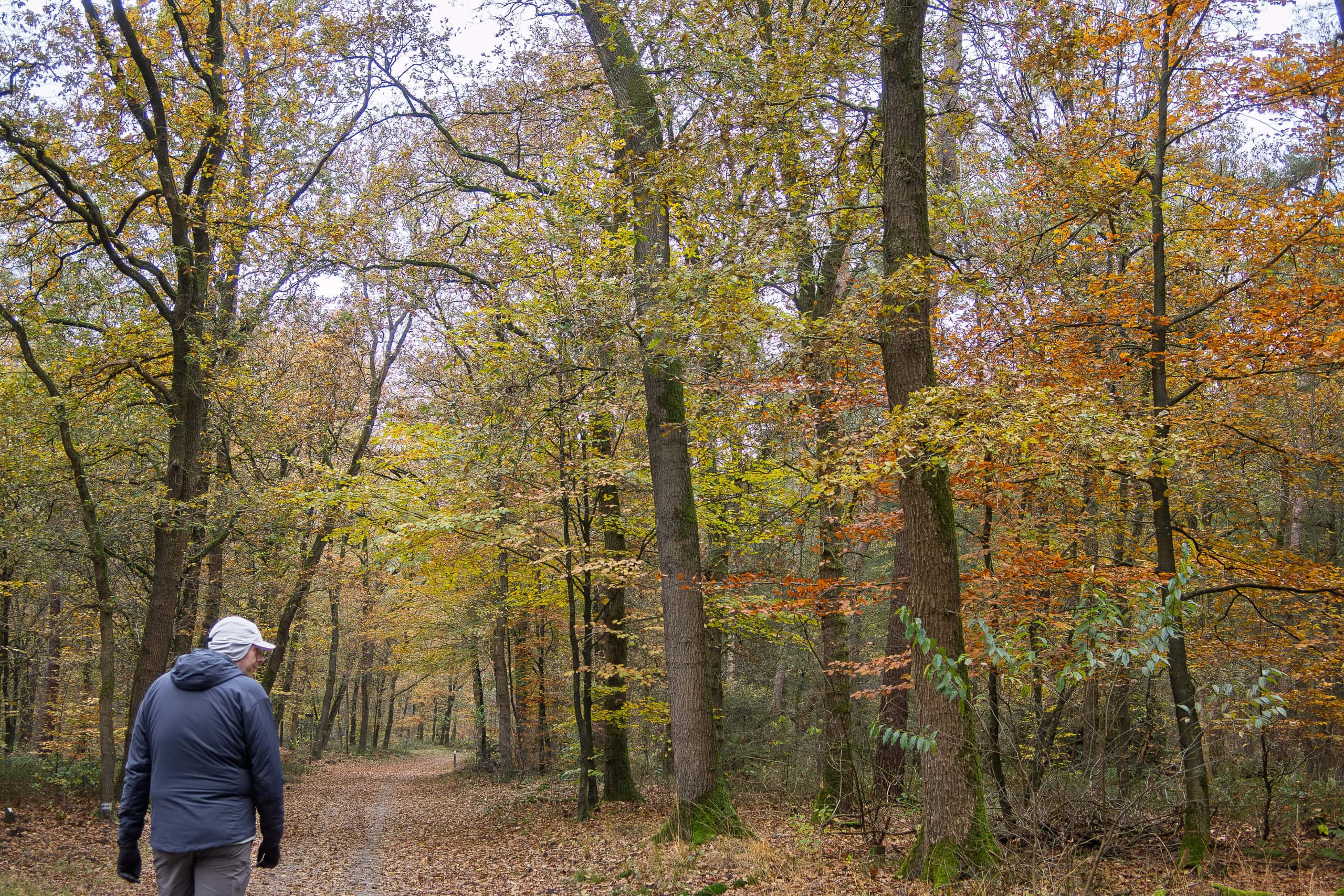
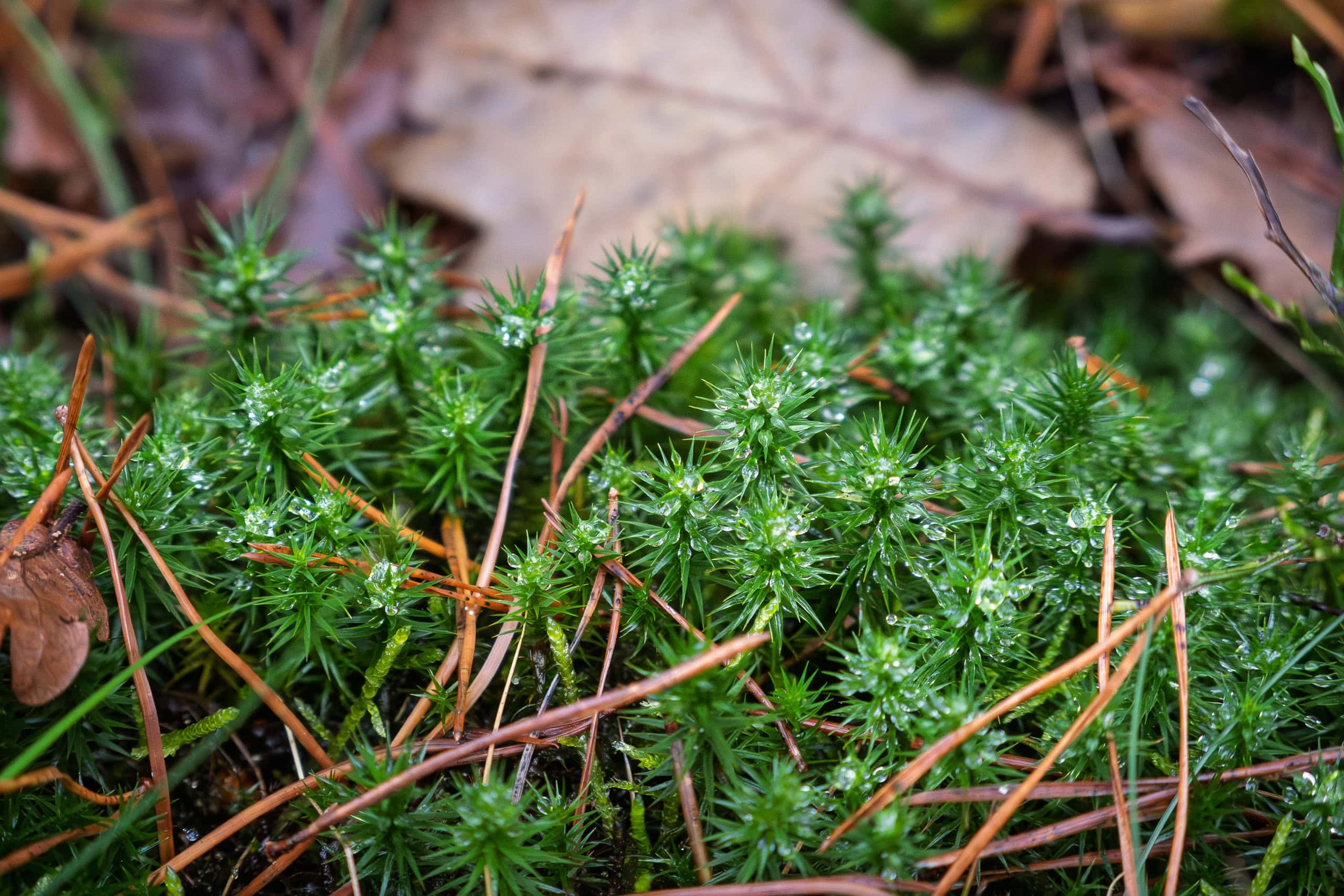
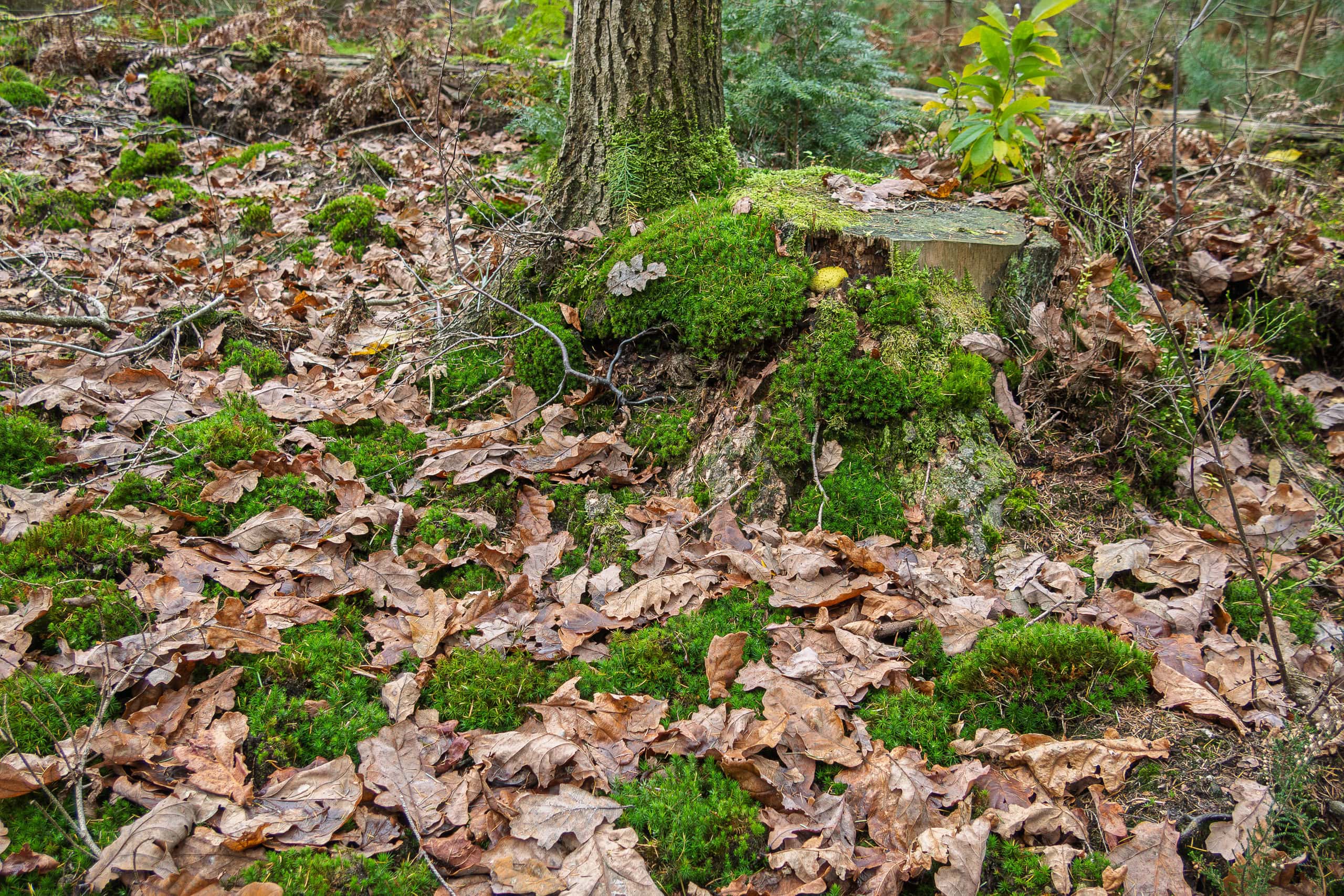
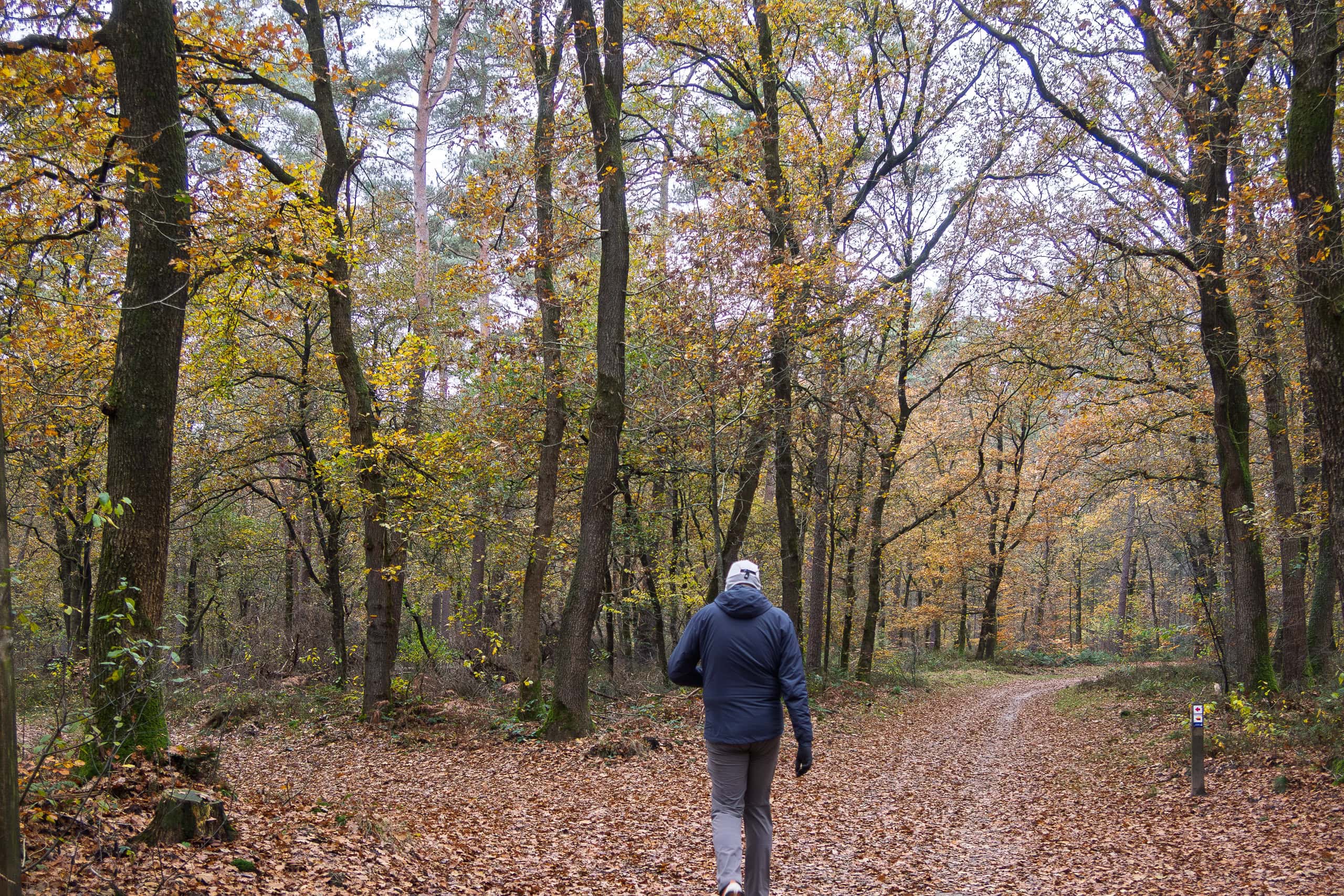
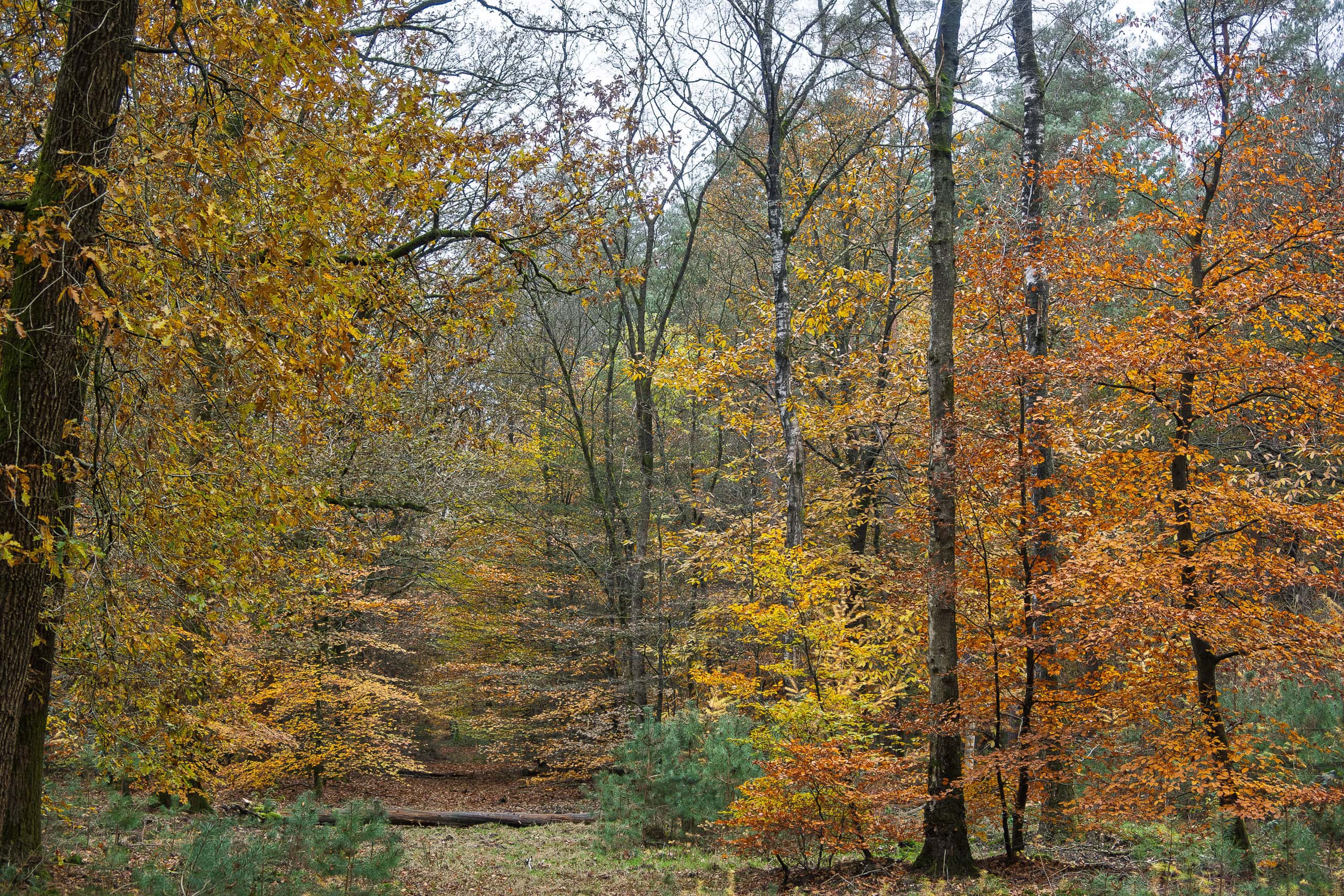
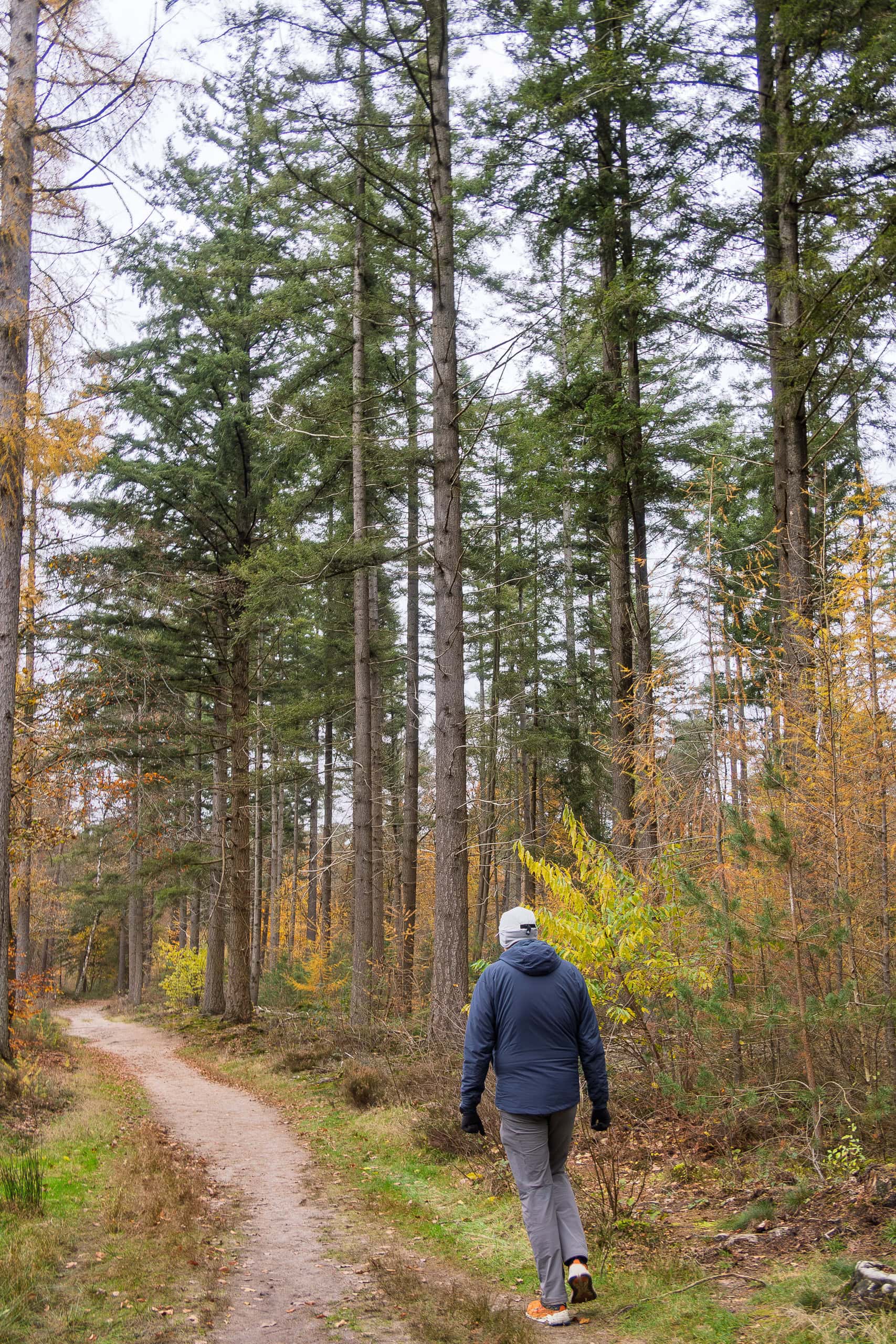
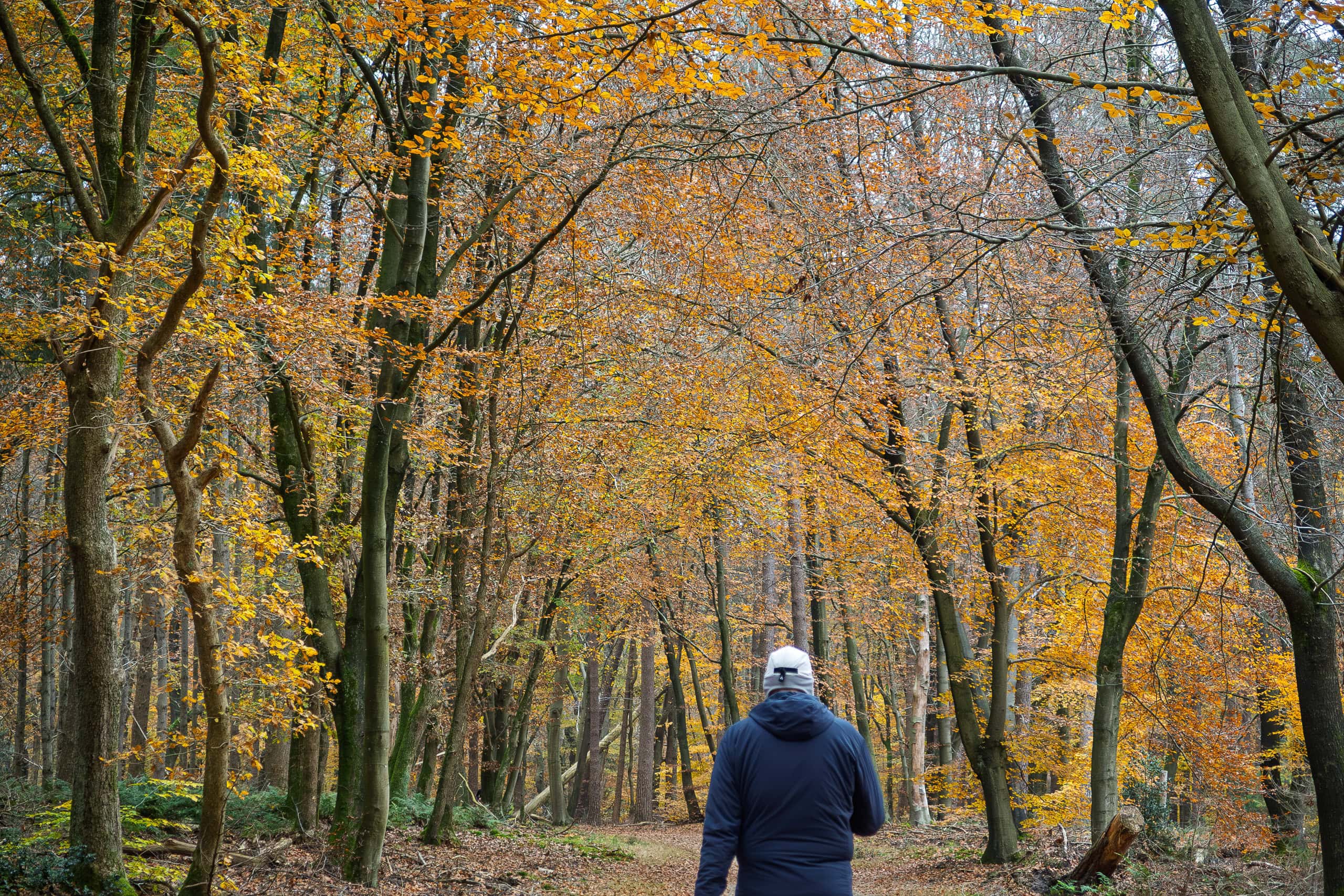
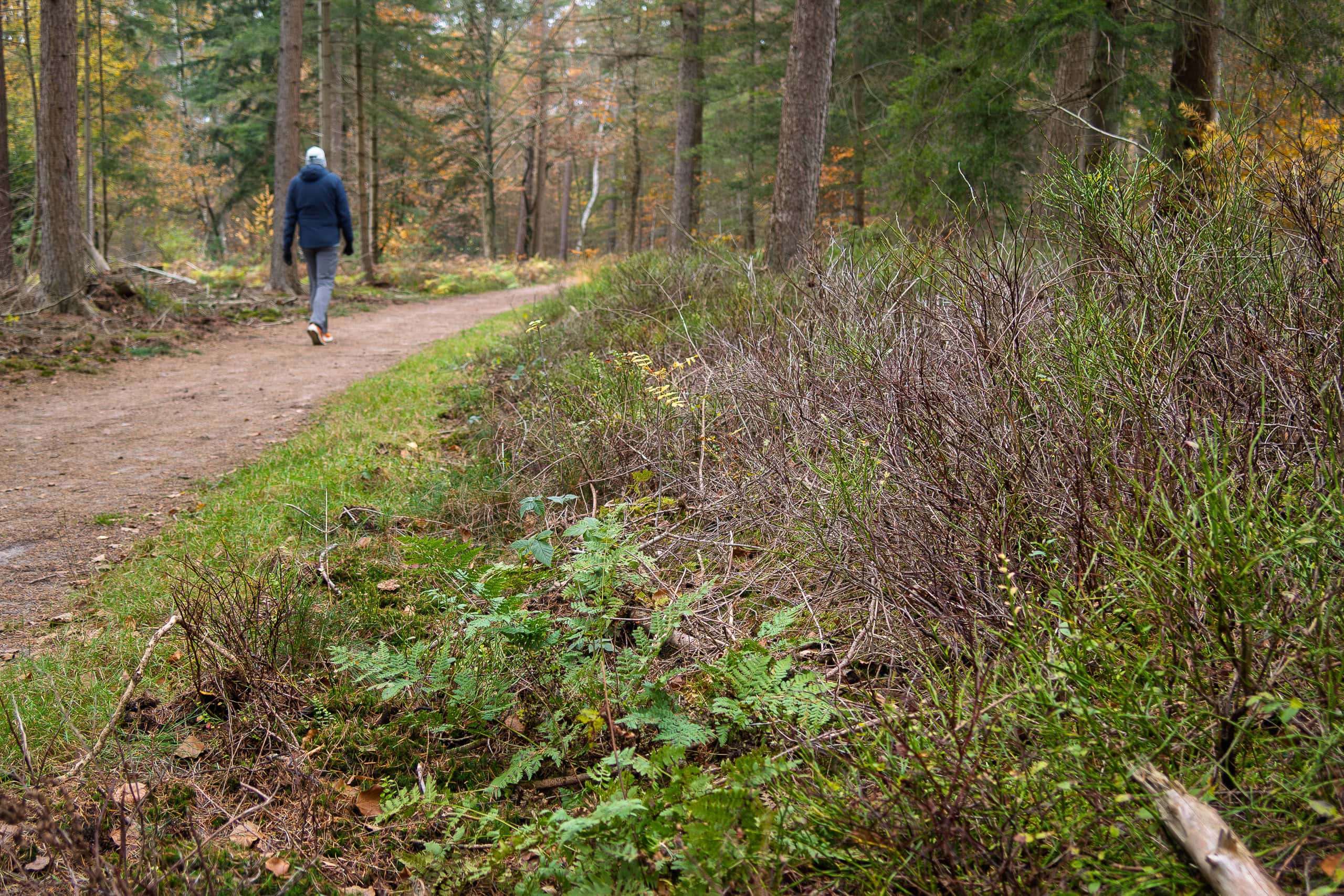
Garderen is a lovely, quiet village in the forests north of De Hoge Veluwe National Park — an area dotted with simple holiday cottages where Dutch families spend weekends immersed in nature.
We stayed in one of these small cottages for a few days, far from the city’s noise, wrapped in trees, enjoying a sense of complete stillness.

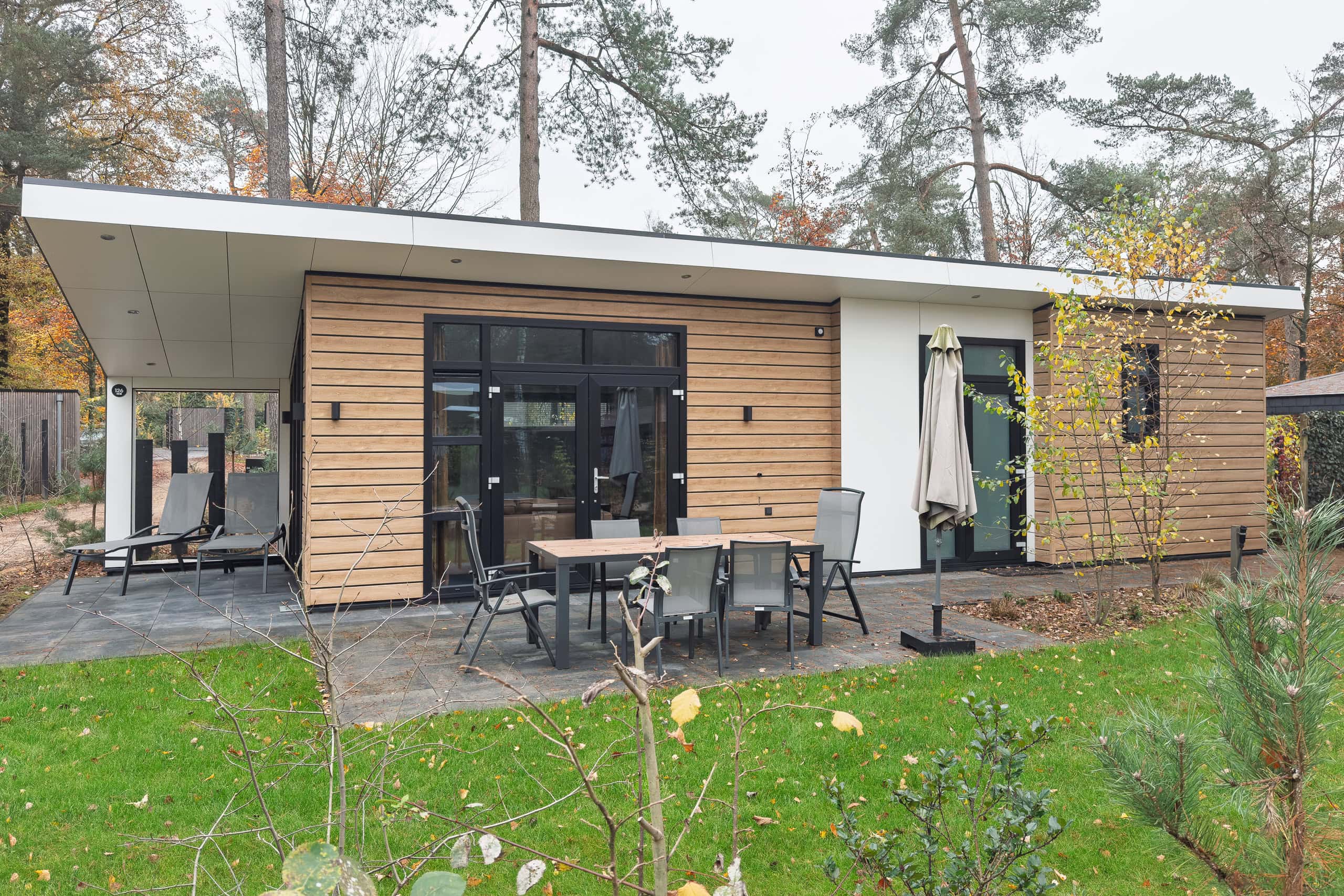

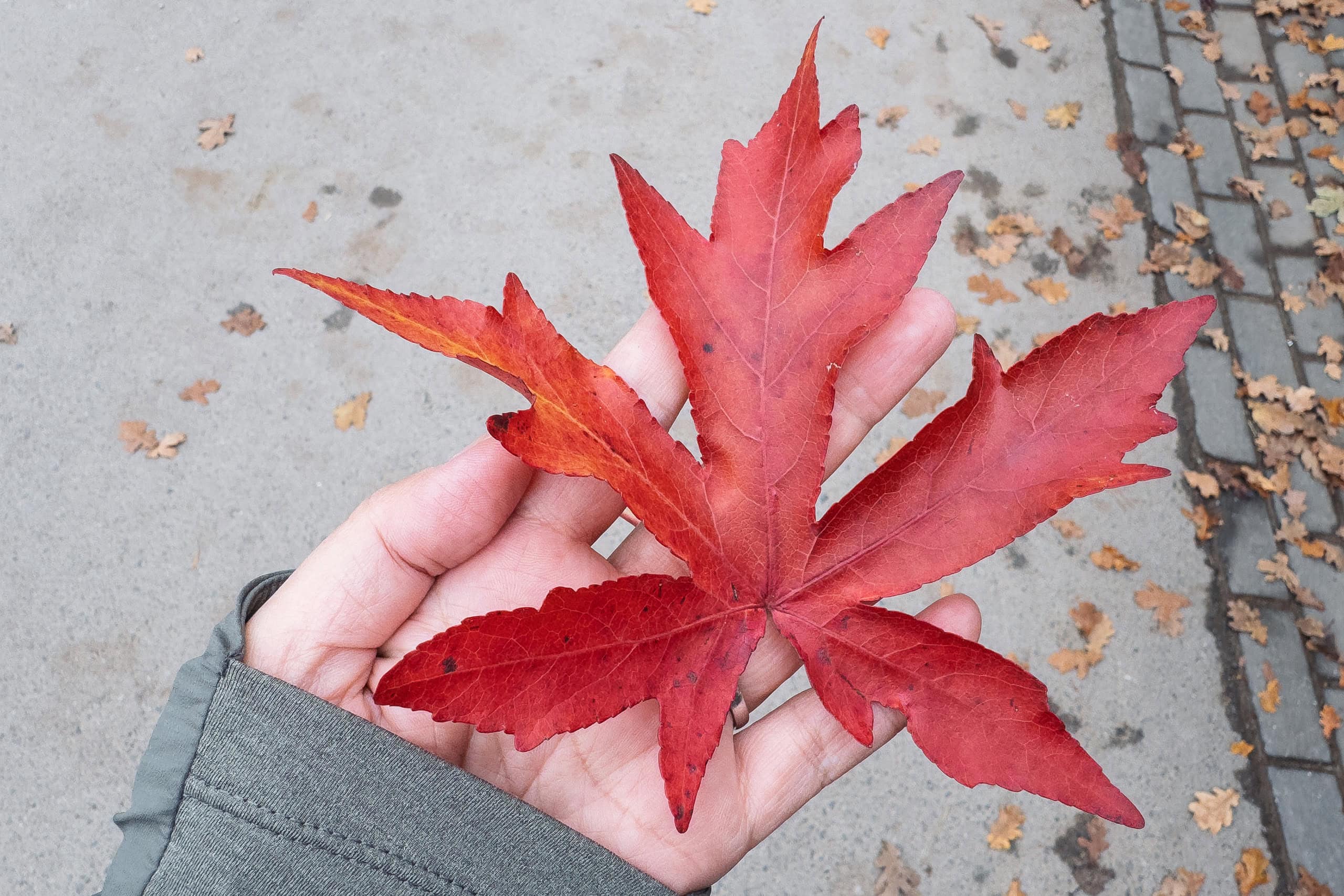

The forest here is mostly broadleaf, the ground carpeted with fallen oak and beech leaves. Sadly, seventy or eighty percents of leaves had already fallen.
Yet even now the scenery was beautiful; a week or two earlier, the entire forest must have been bathed in gold, breathtaking to see.
Here and there, stands of evergreen conifers punctuated the gold with deep green shadows.
This is the dampest time of year in the Netherlands, and the mosses were thriving. Their lush, dark green carpets looked almost alive, and among them, bright patches of water moss gleamed, saturated with moisture — glossy, vivid, content in their element.
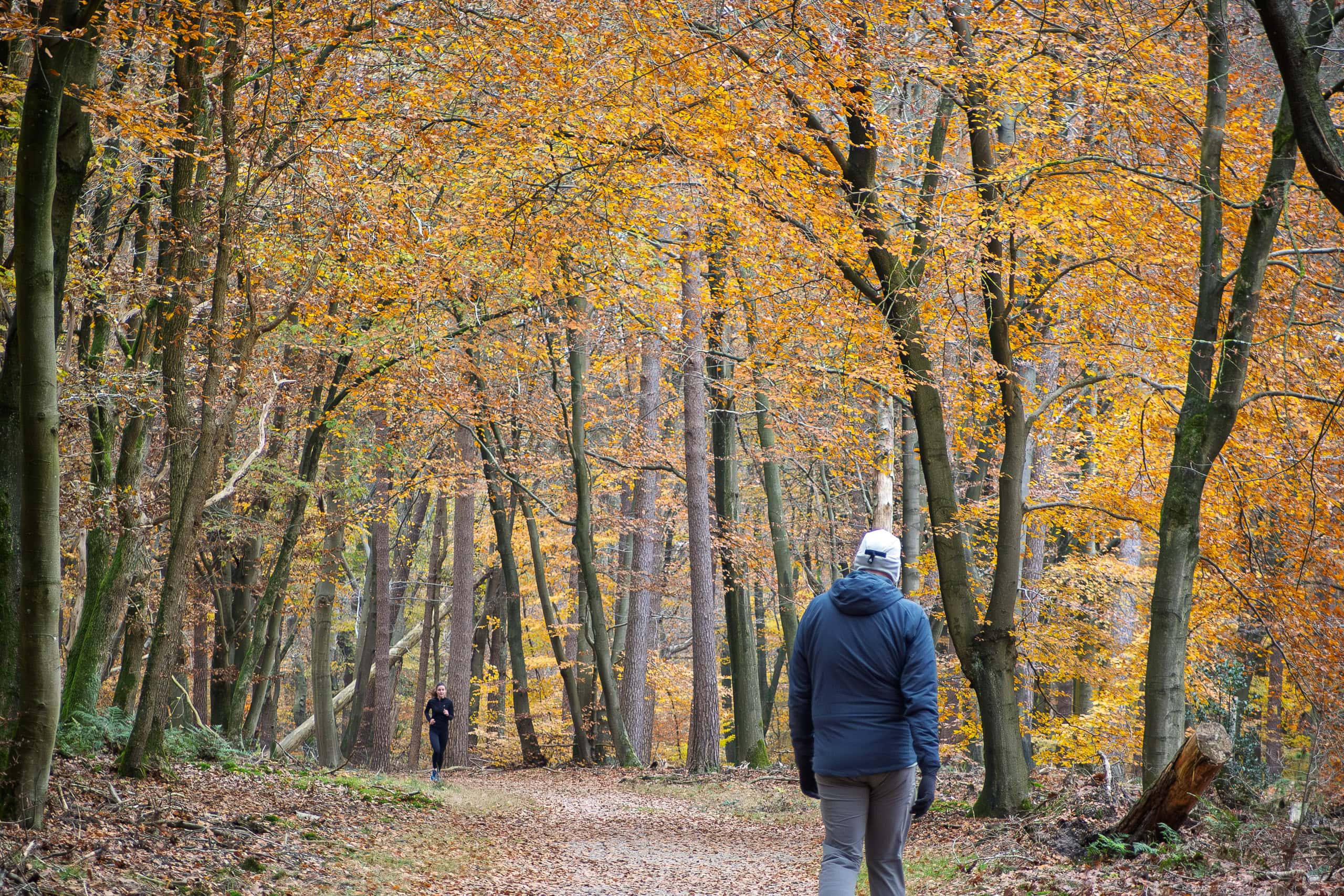
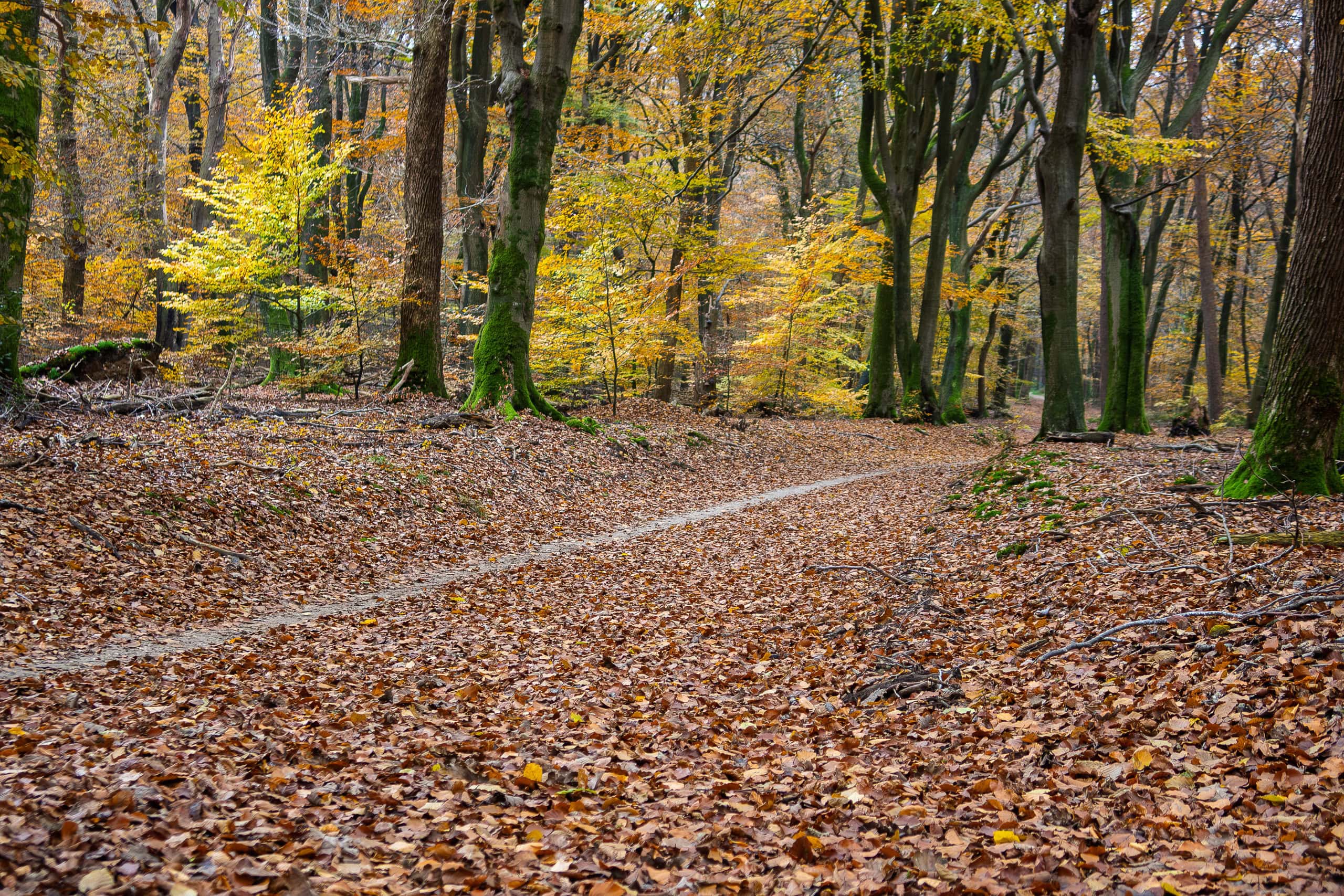
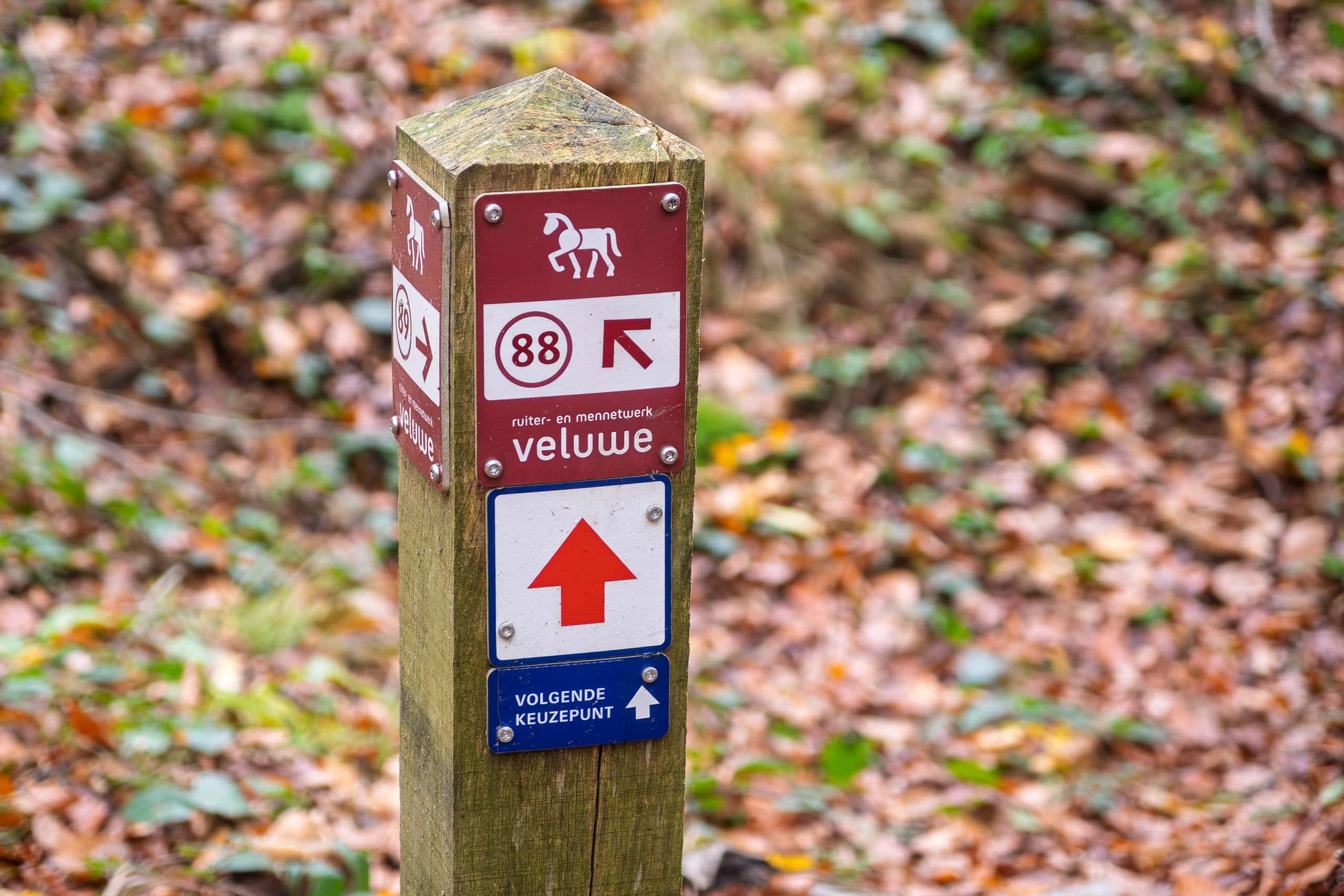
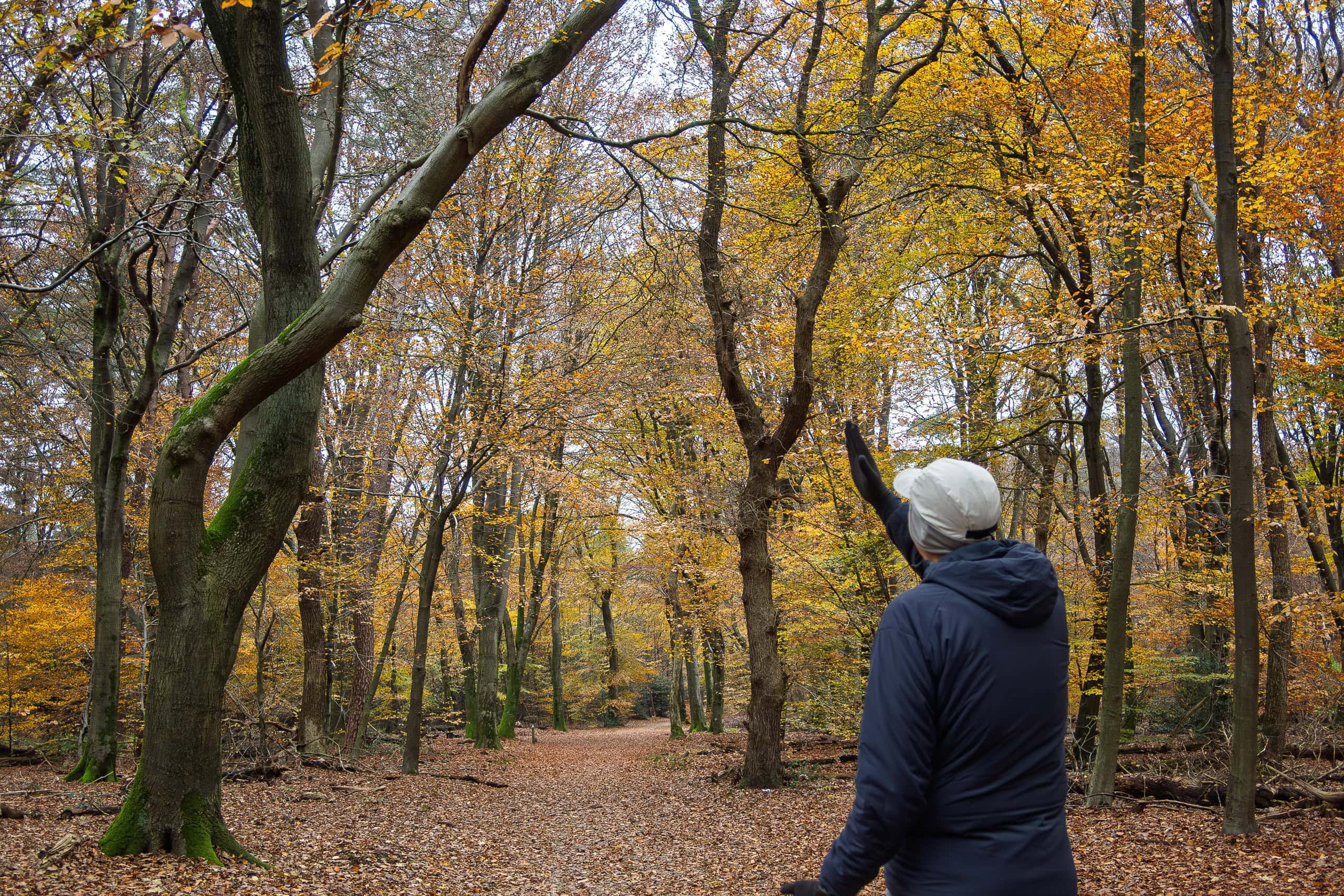
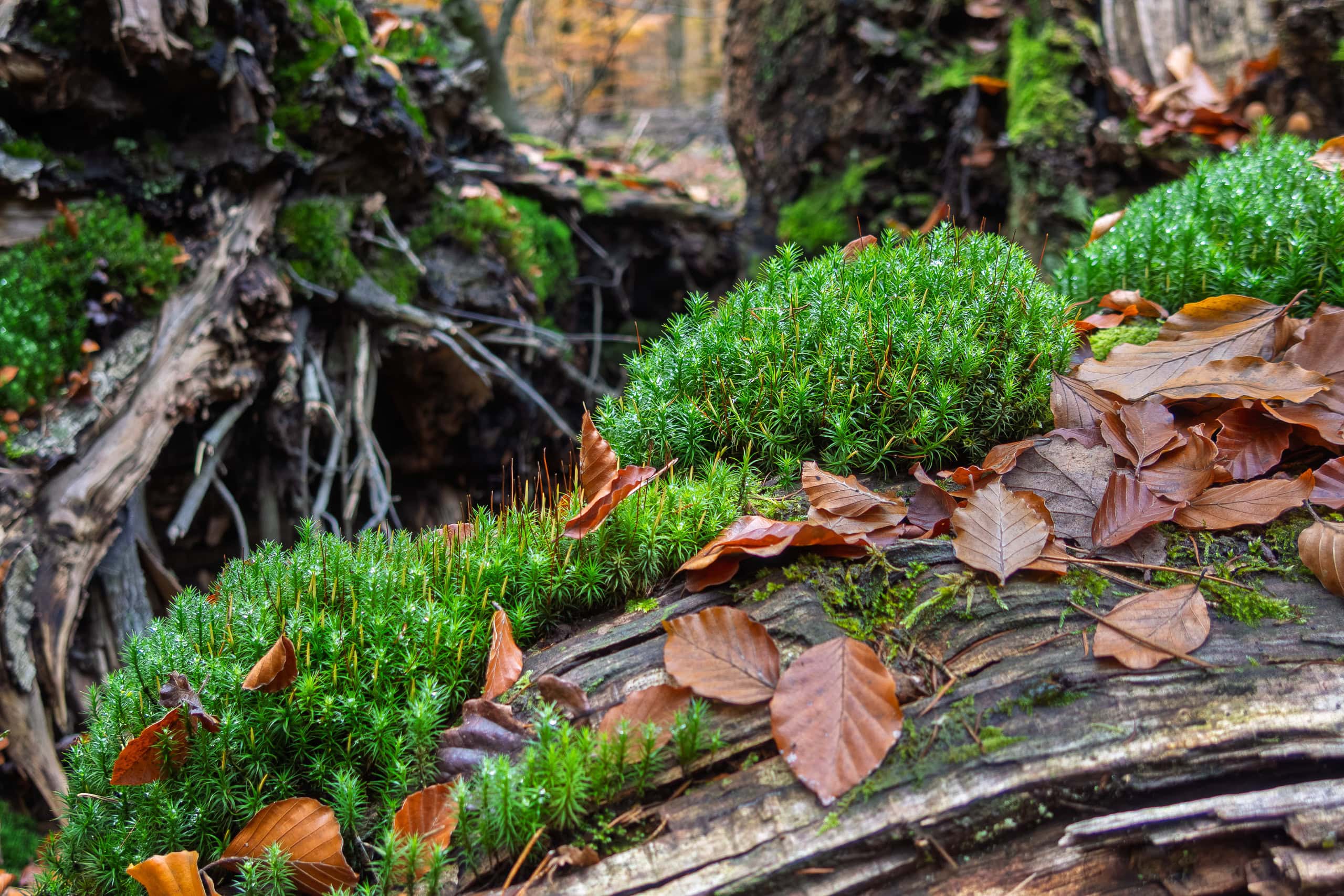
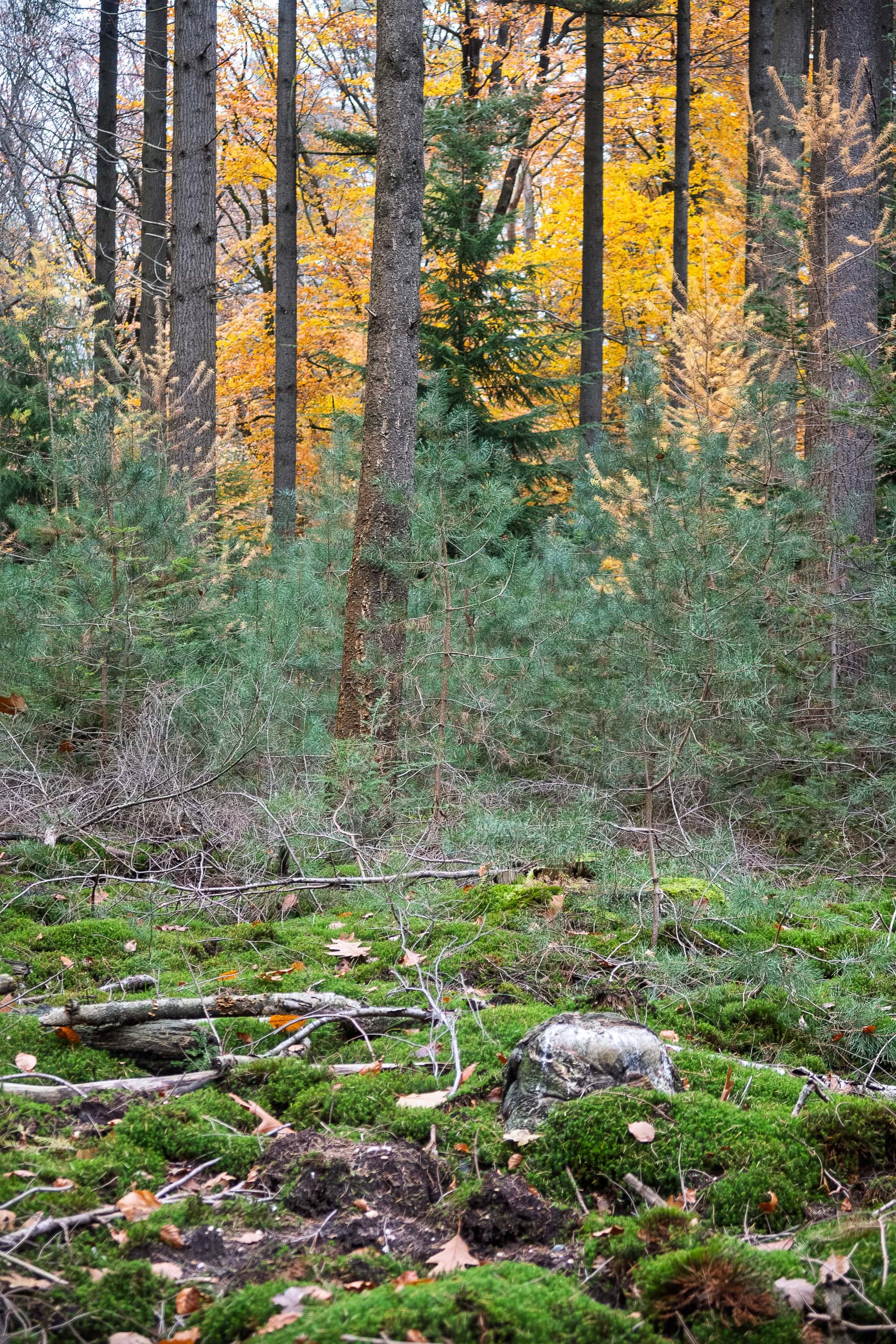
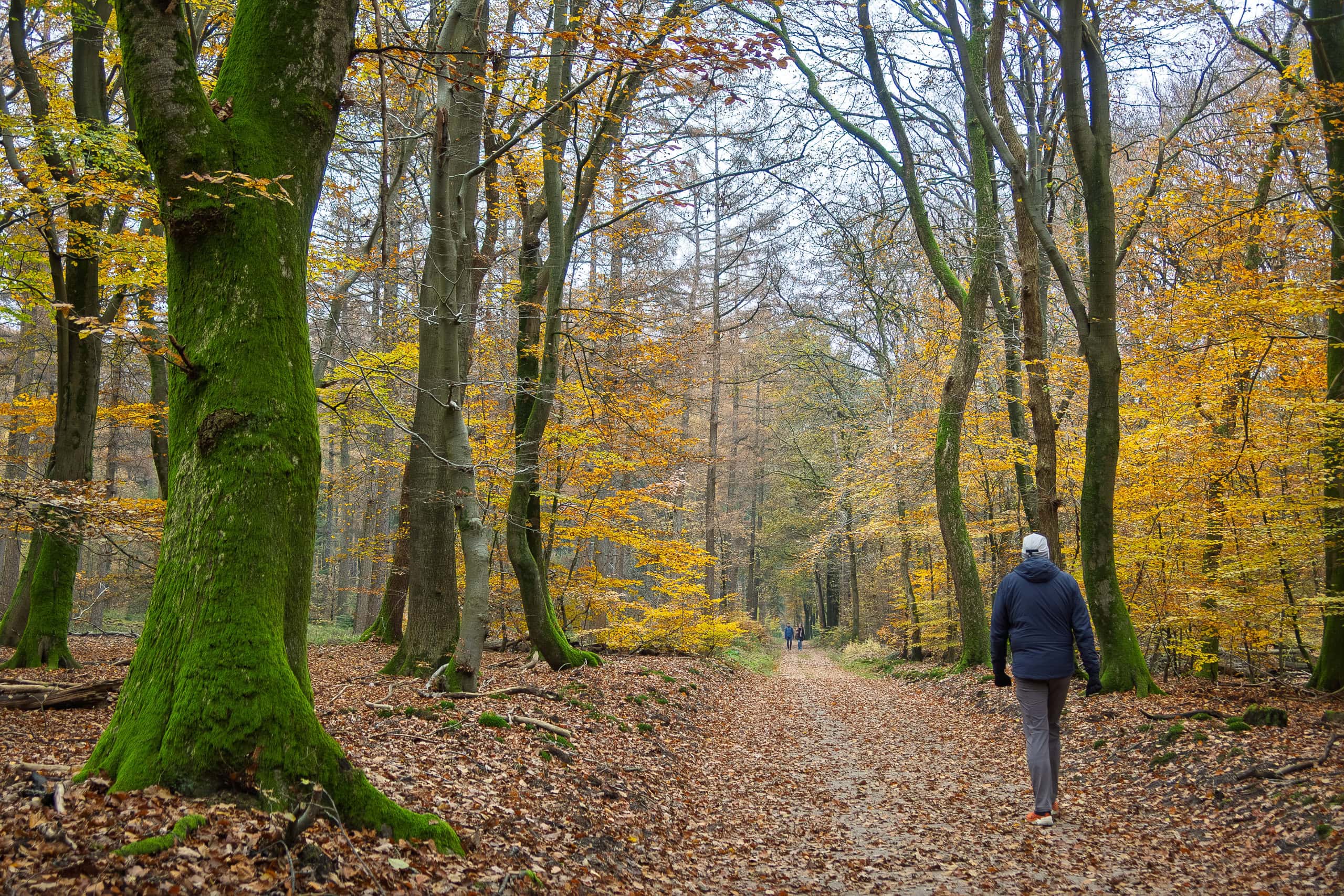
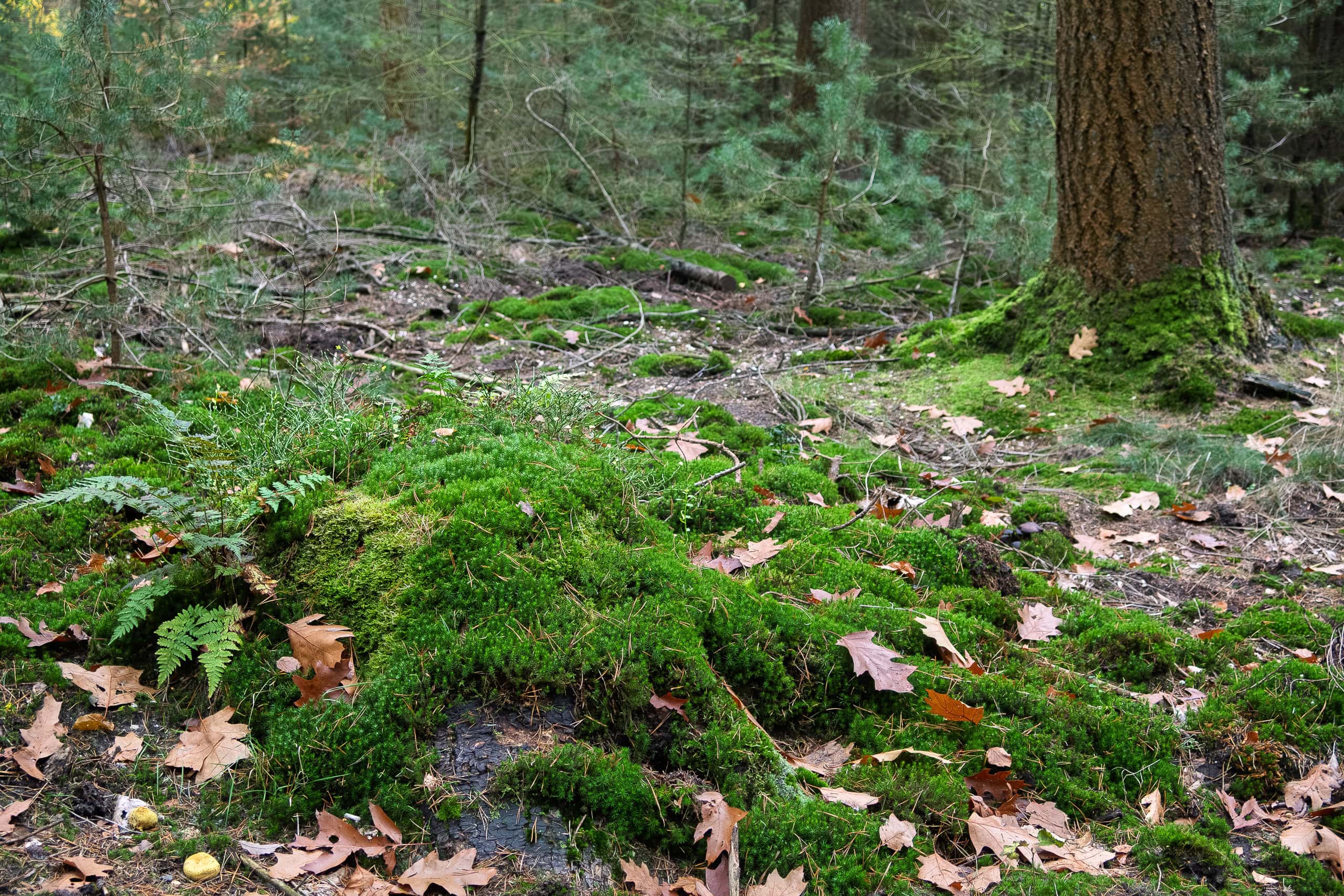
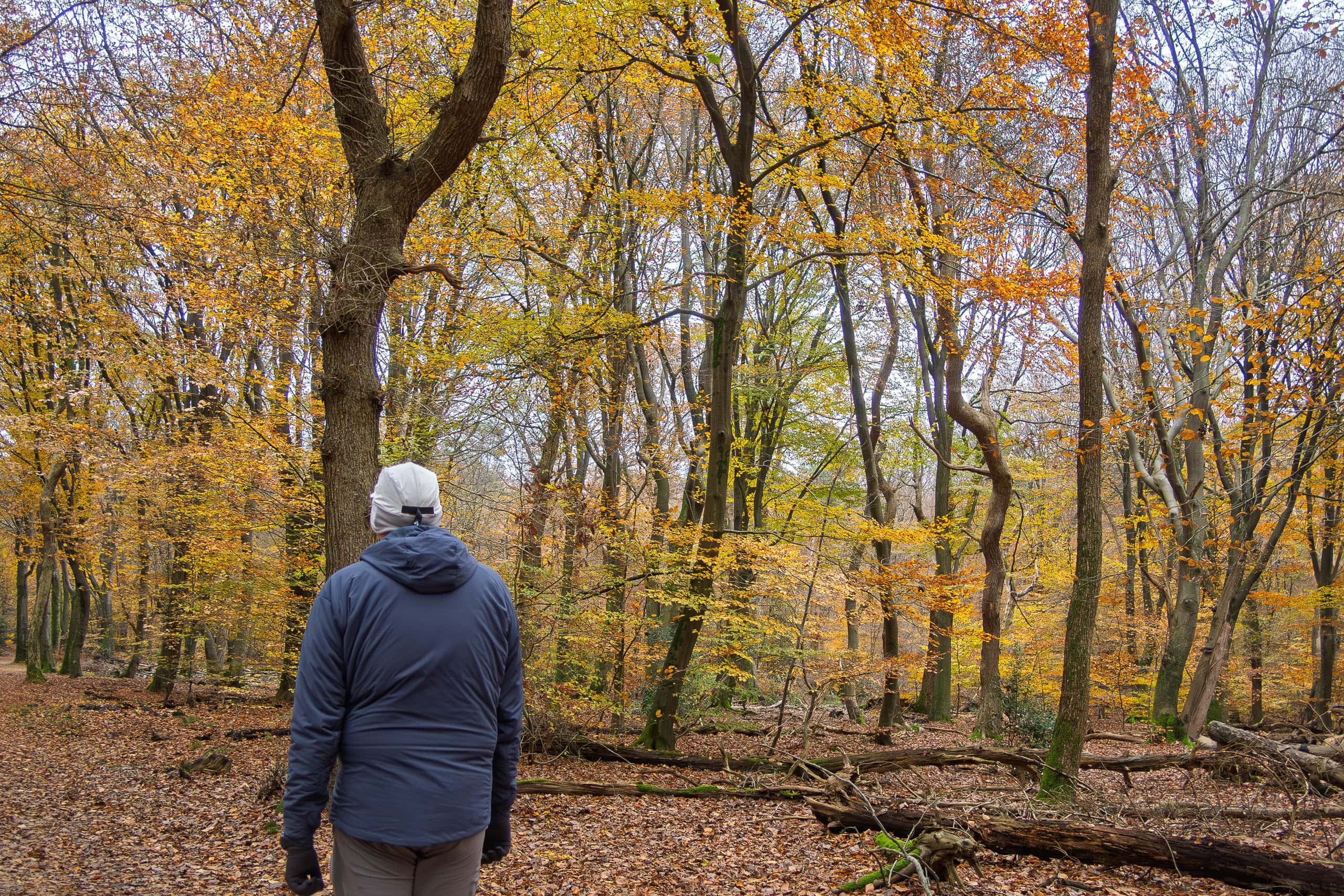
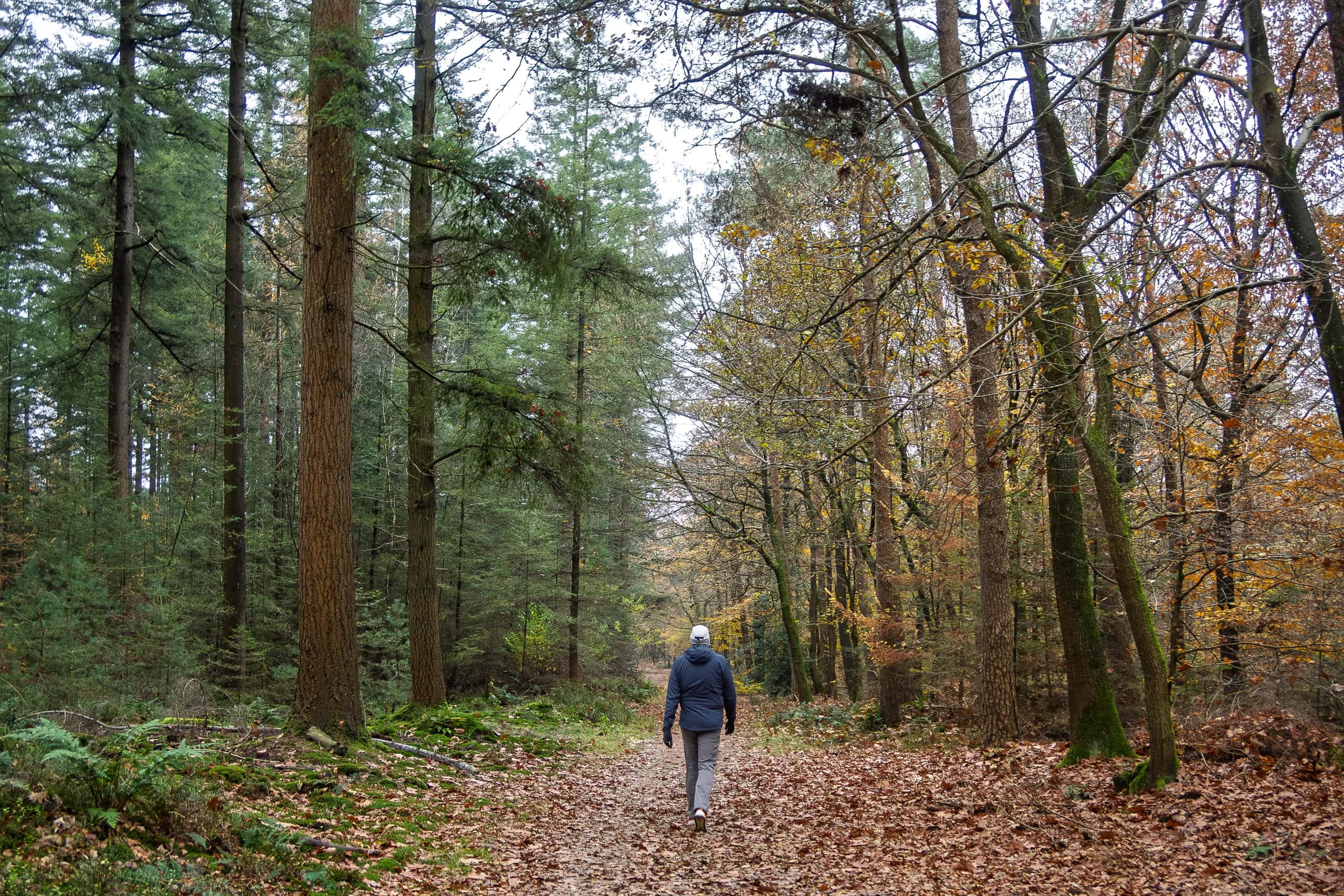
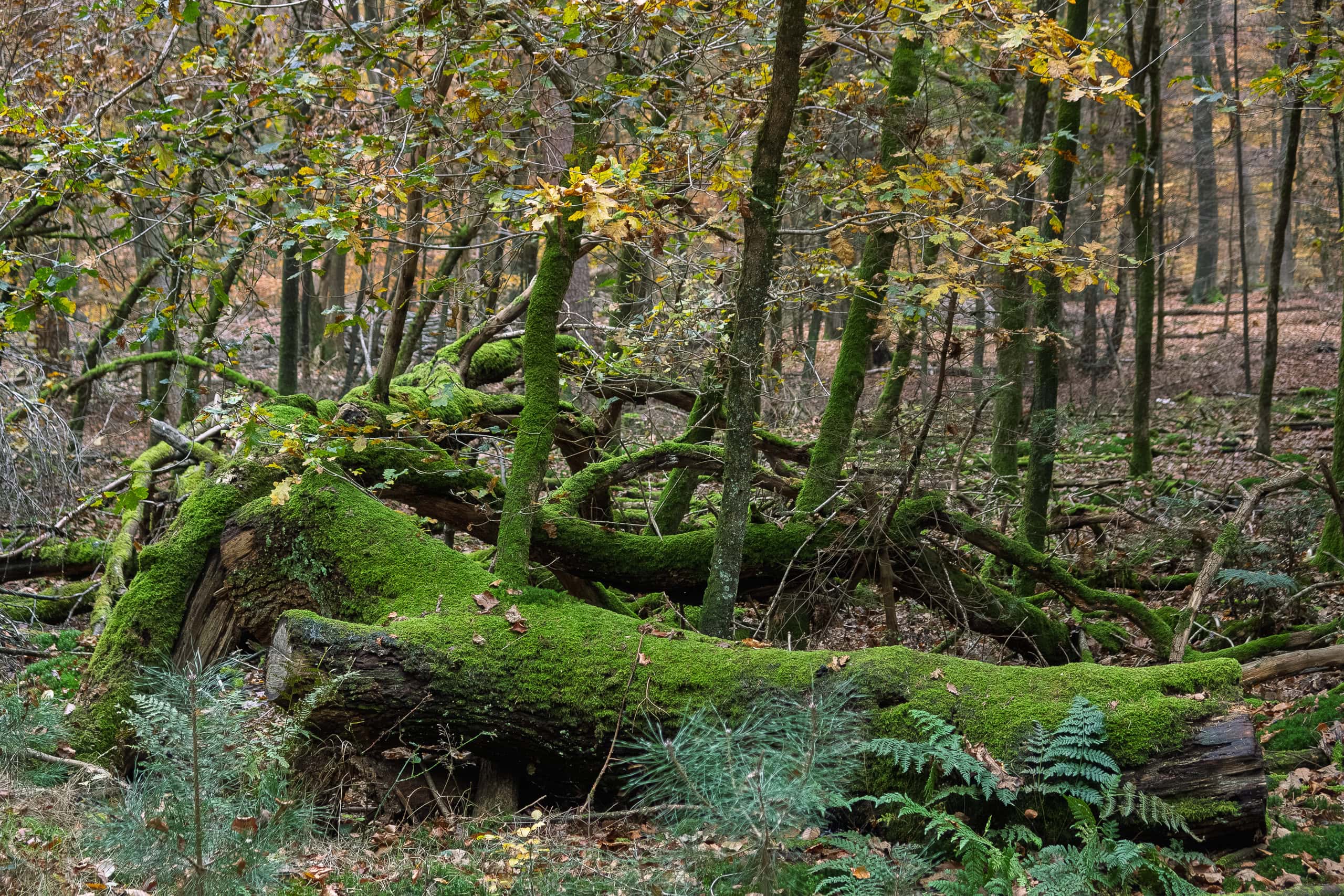
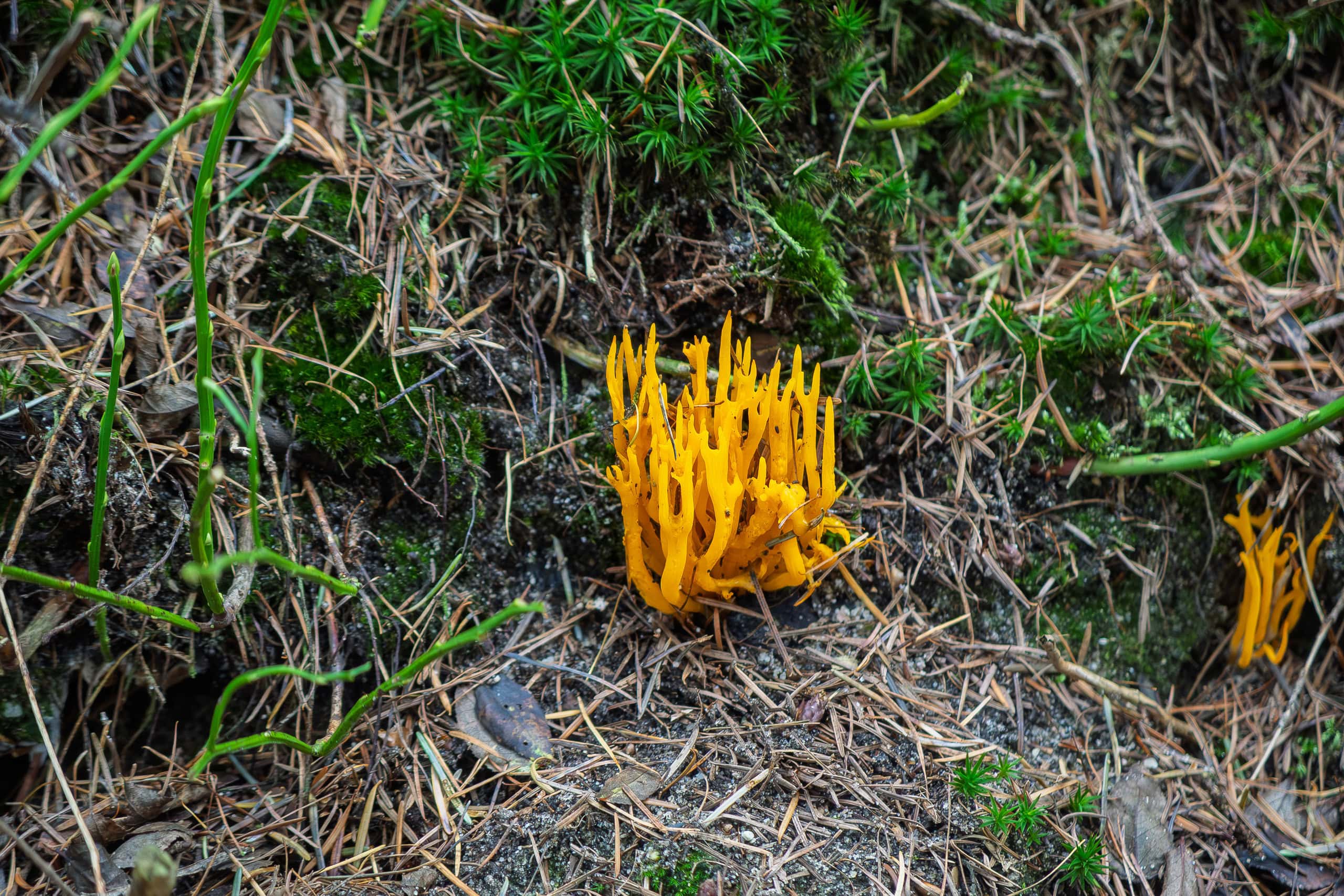
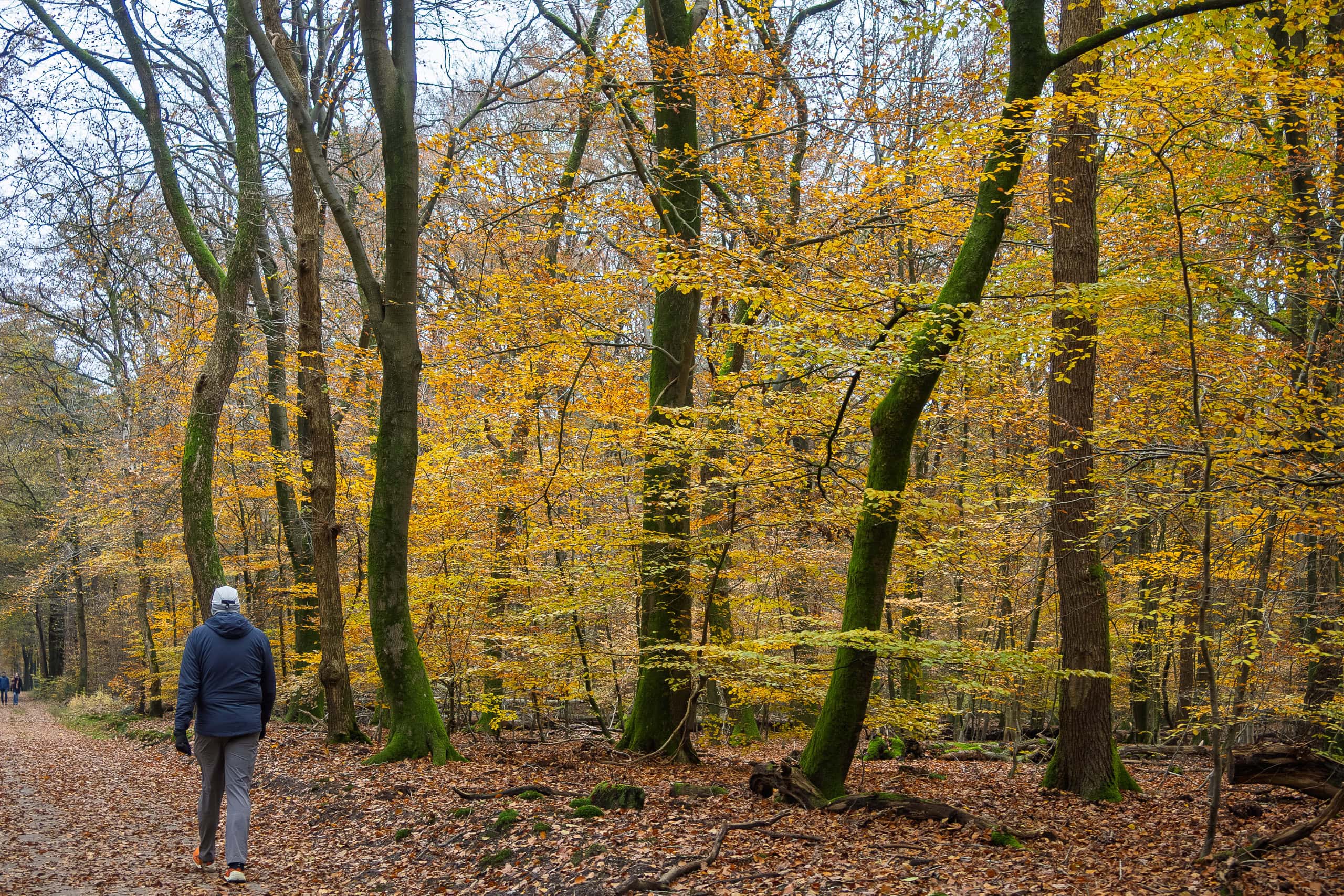
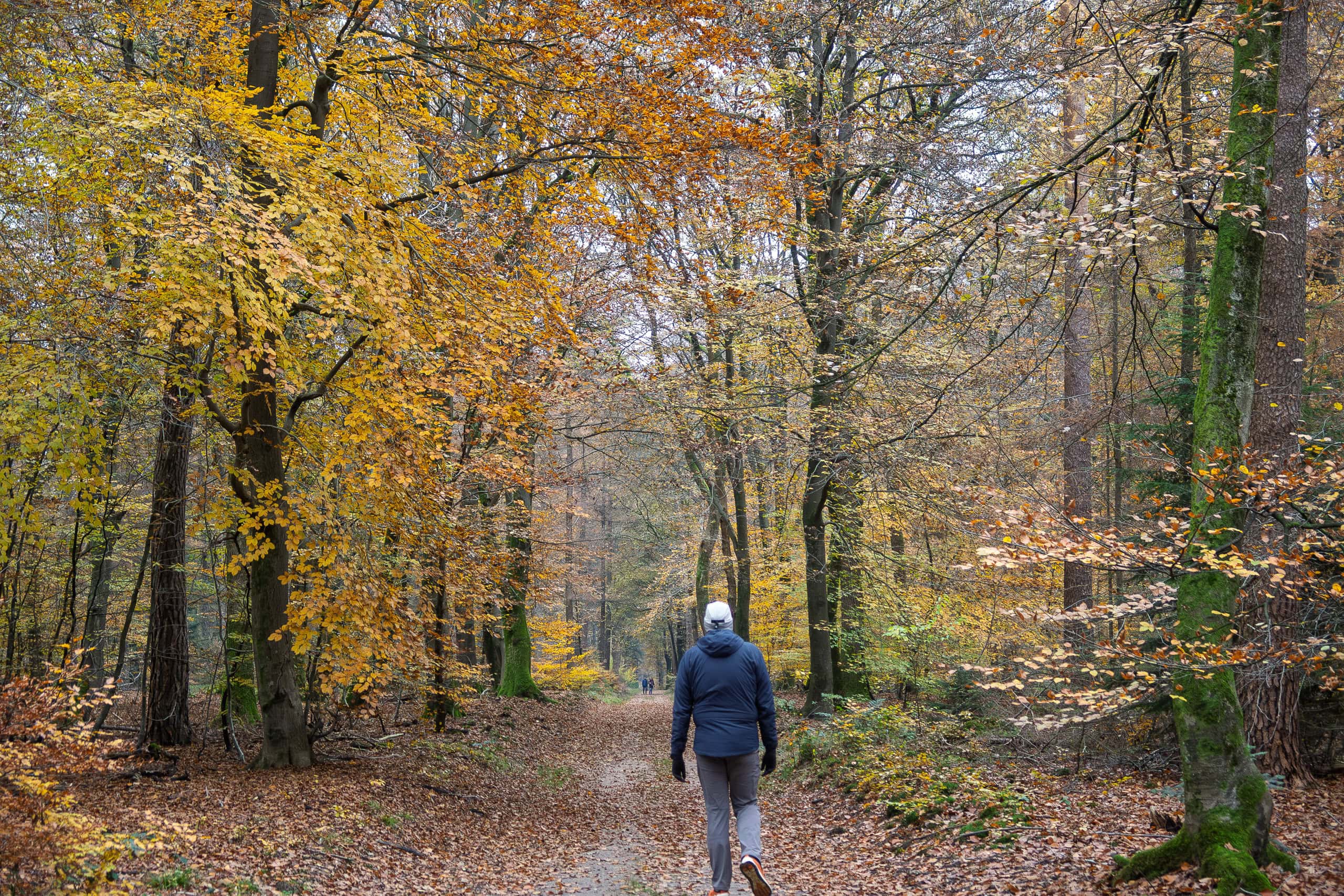
And, naturally, with this much damp air and earth, the mushrooms were celebrating too.
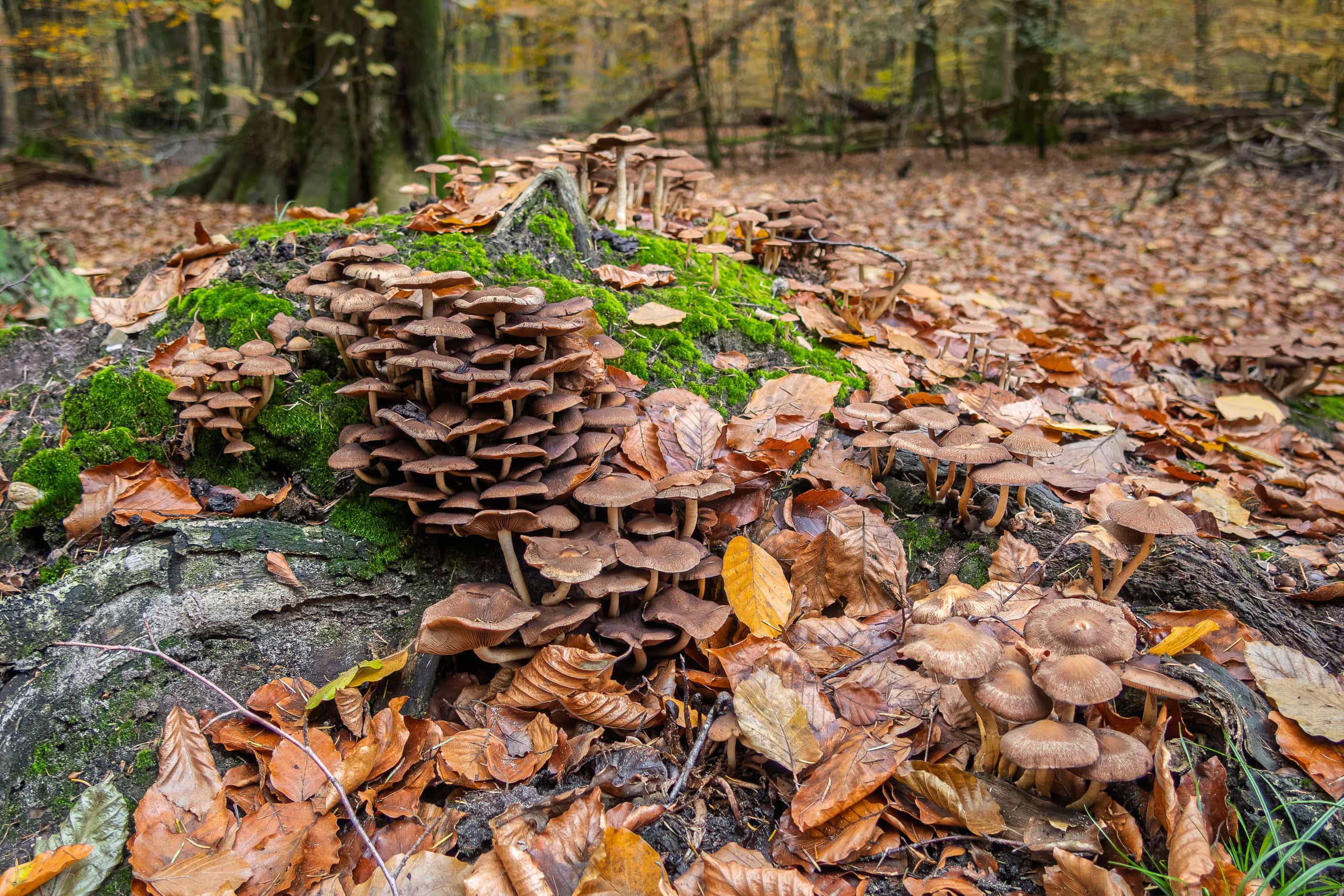
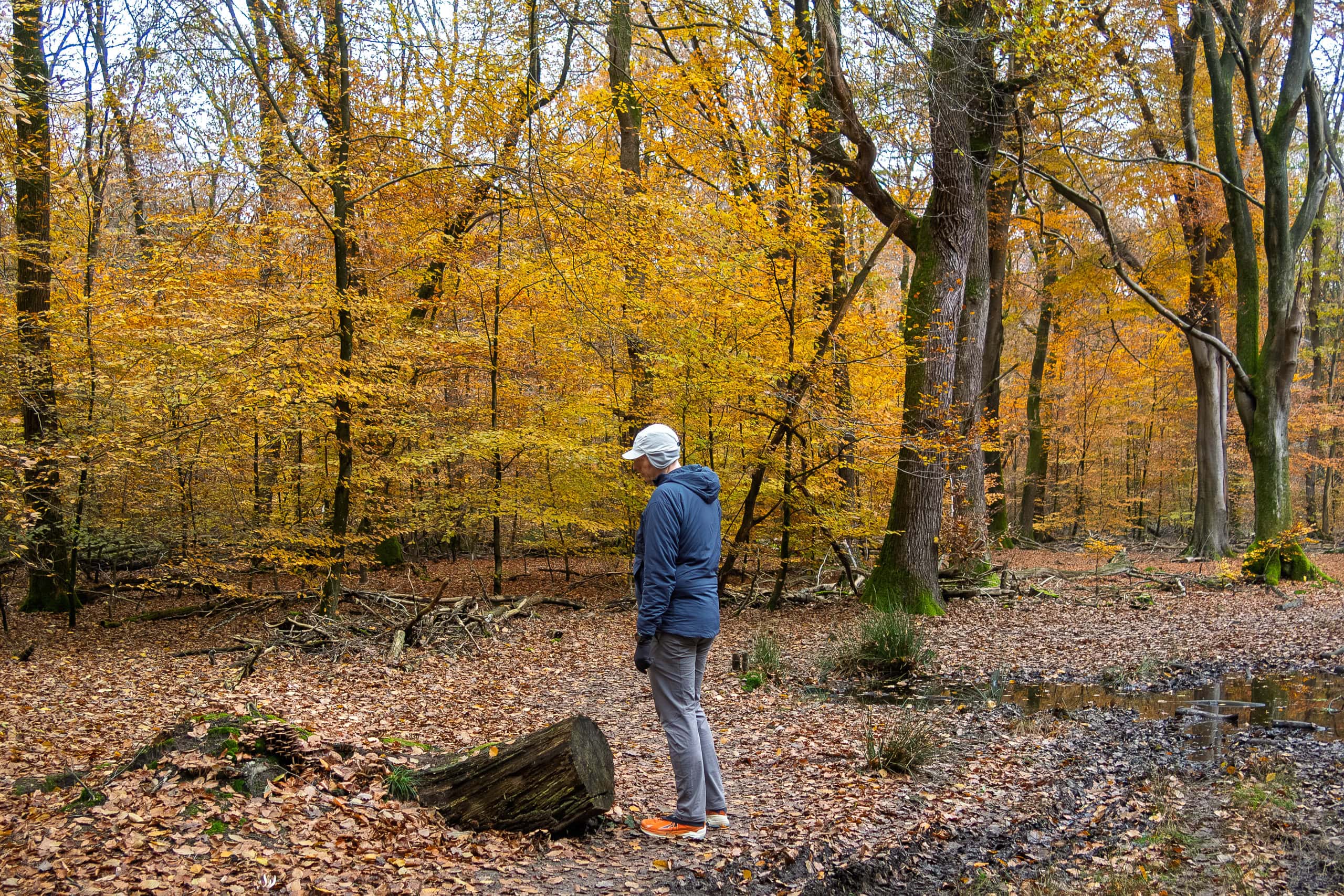
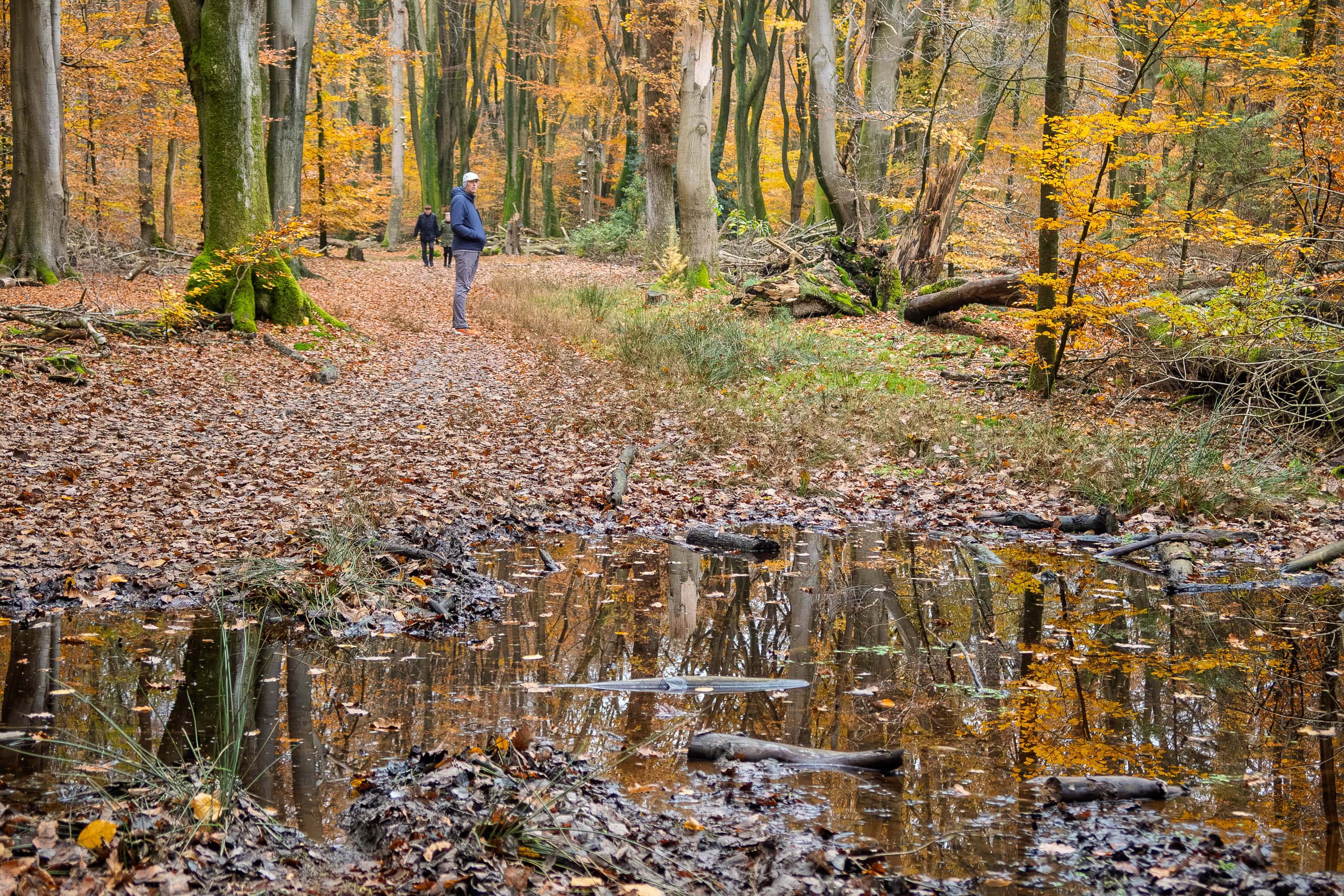
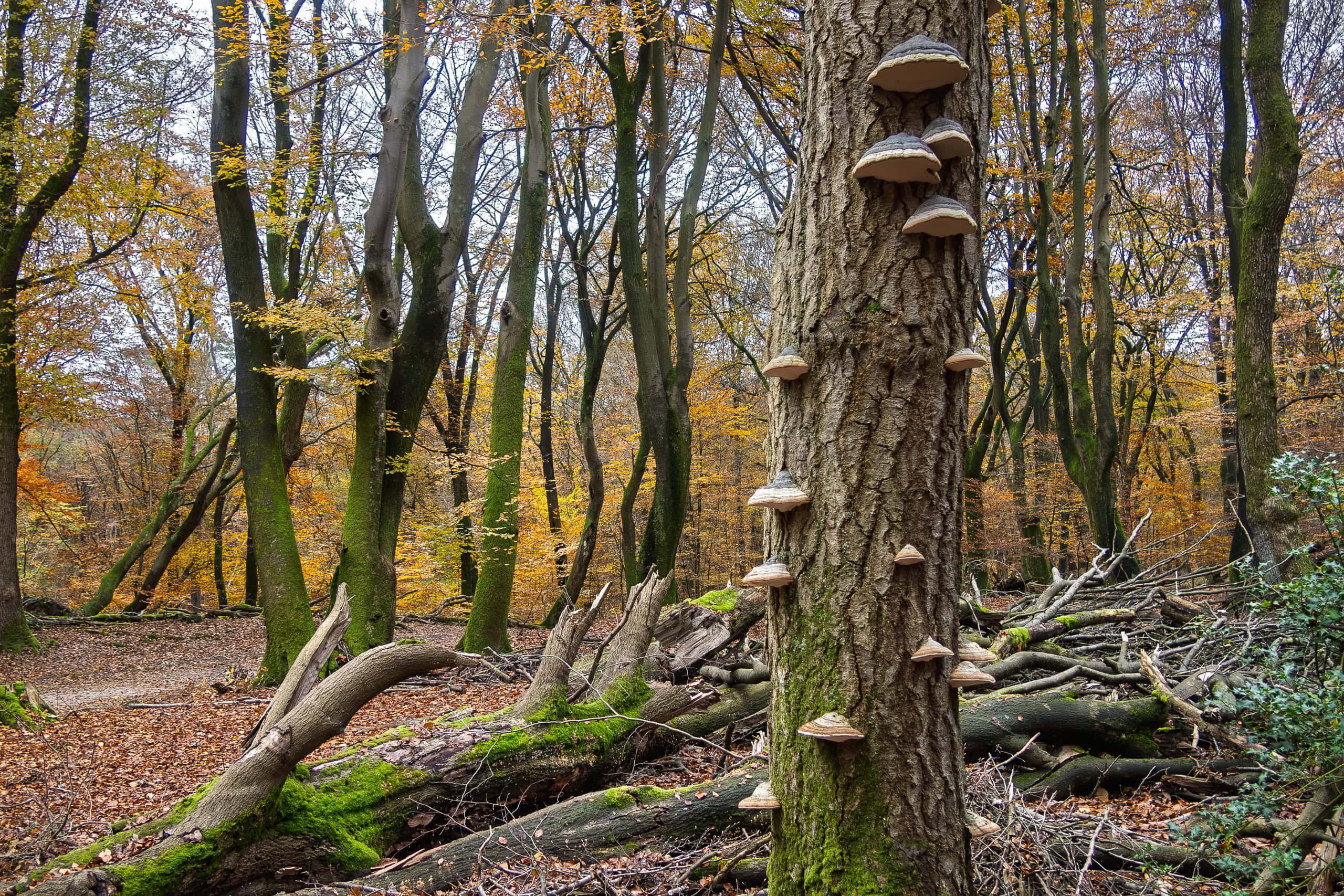
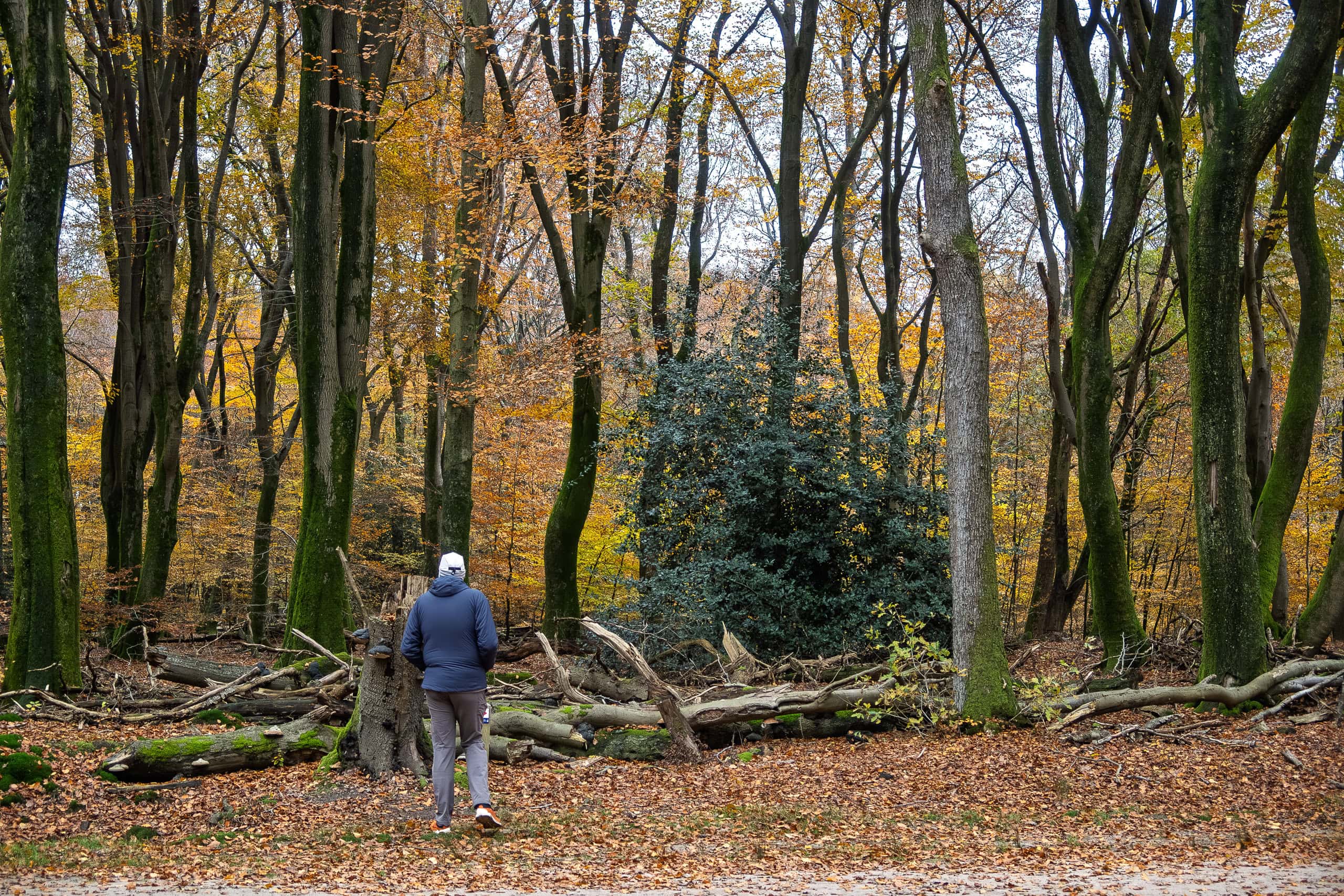
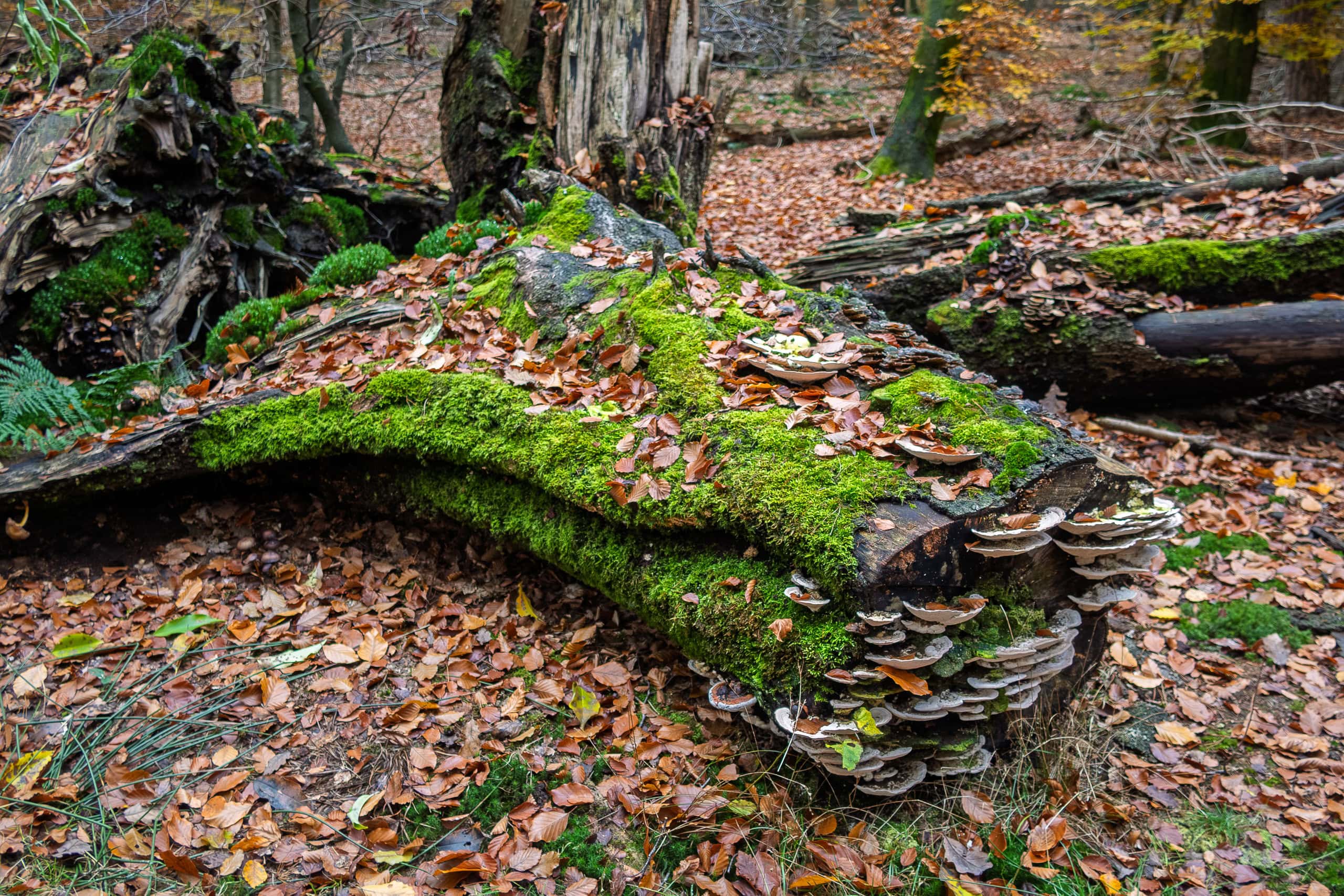
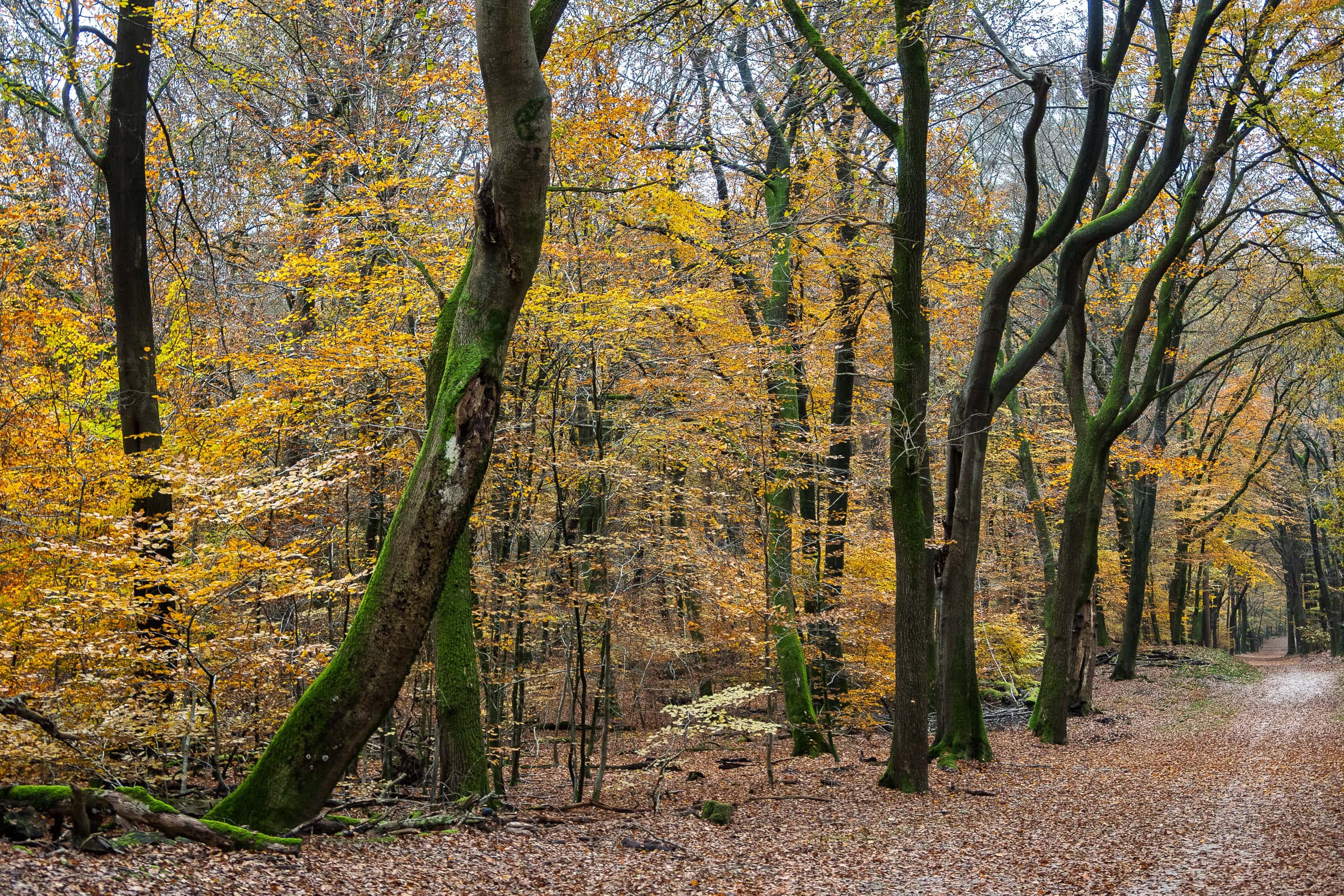
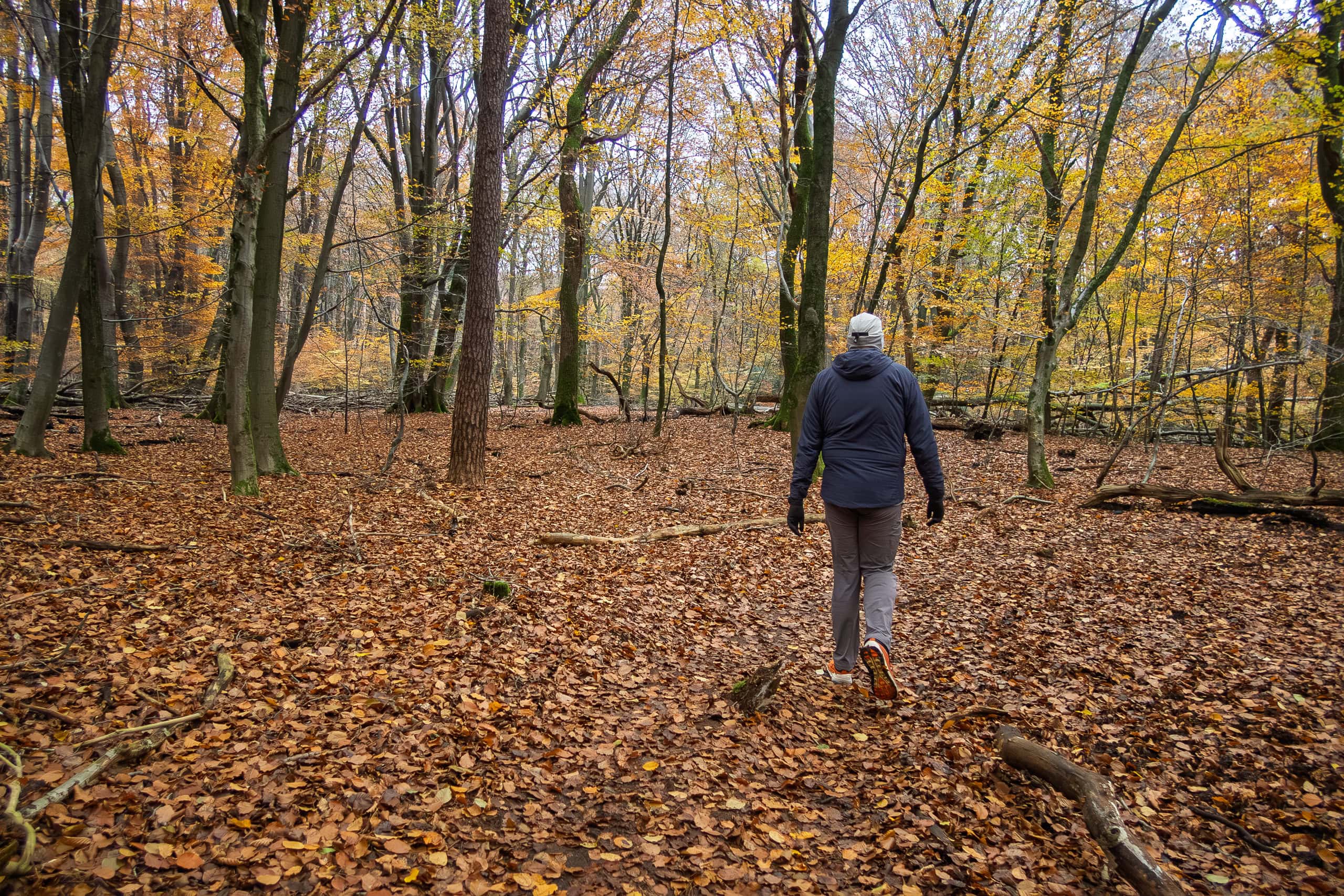
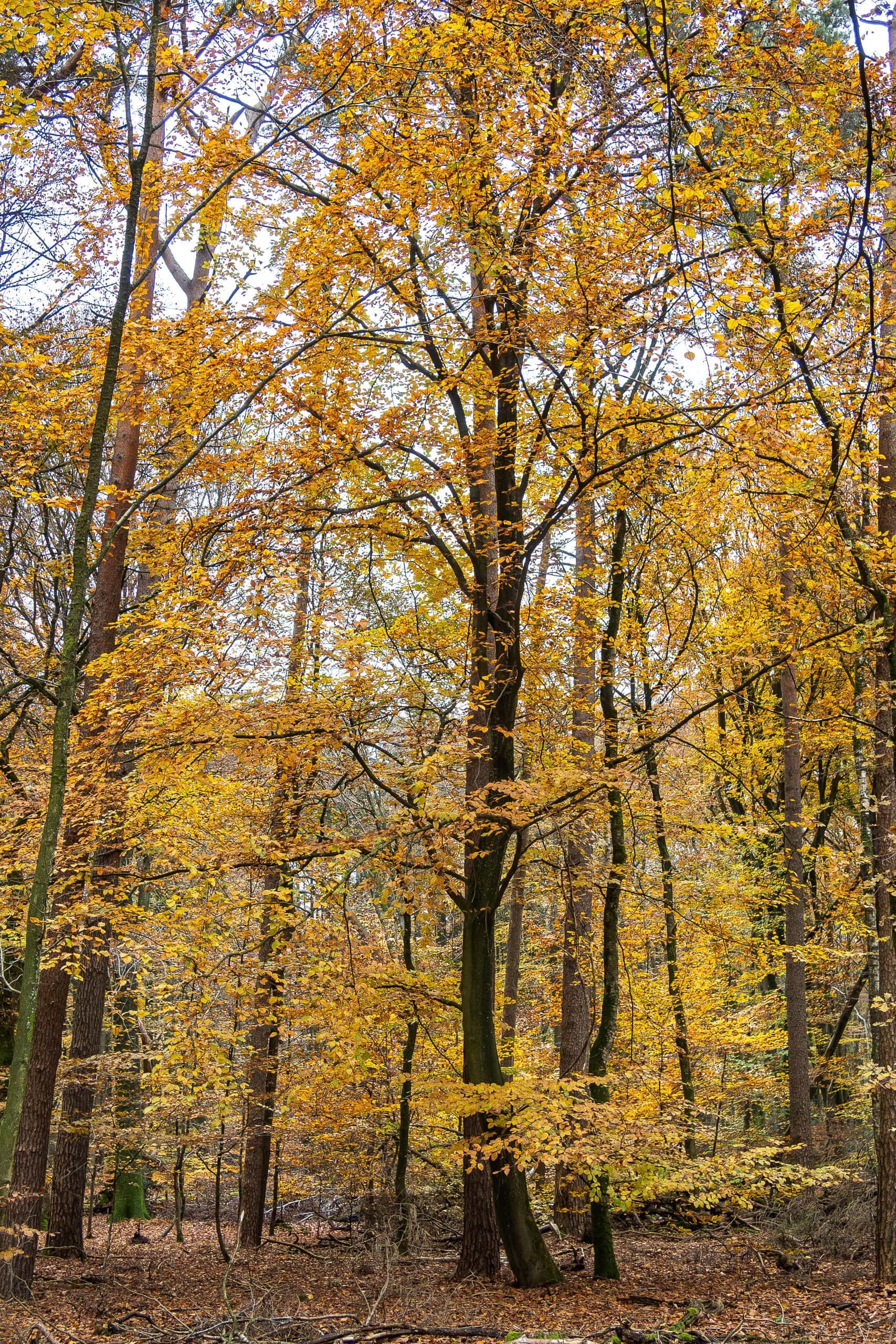
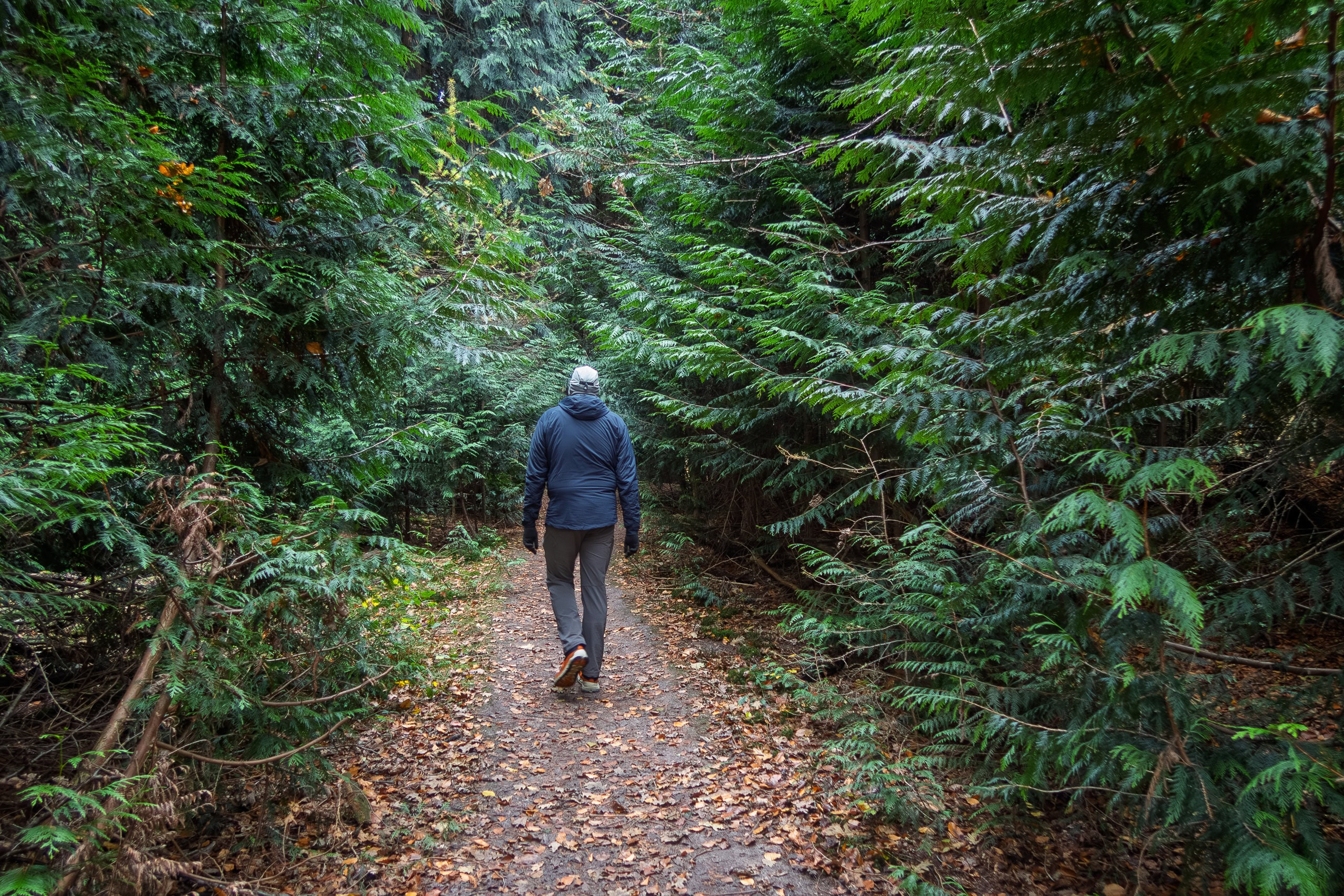
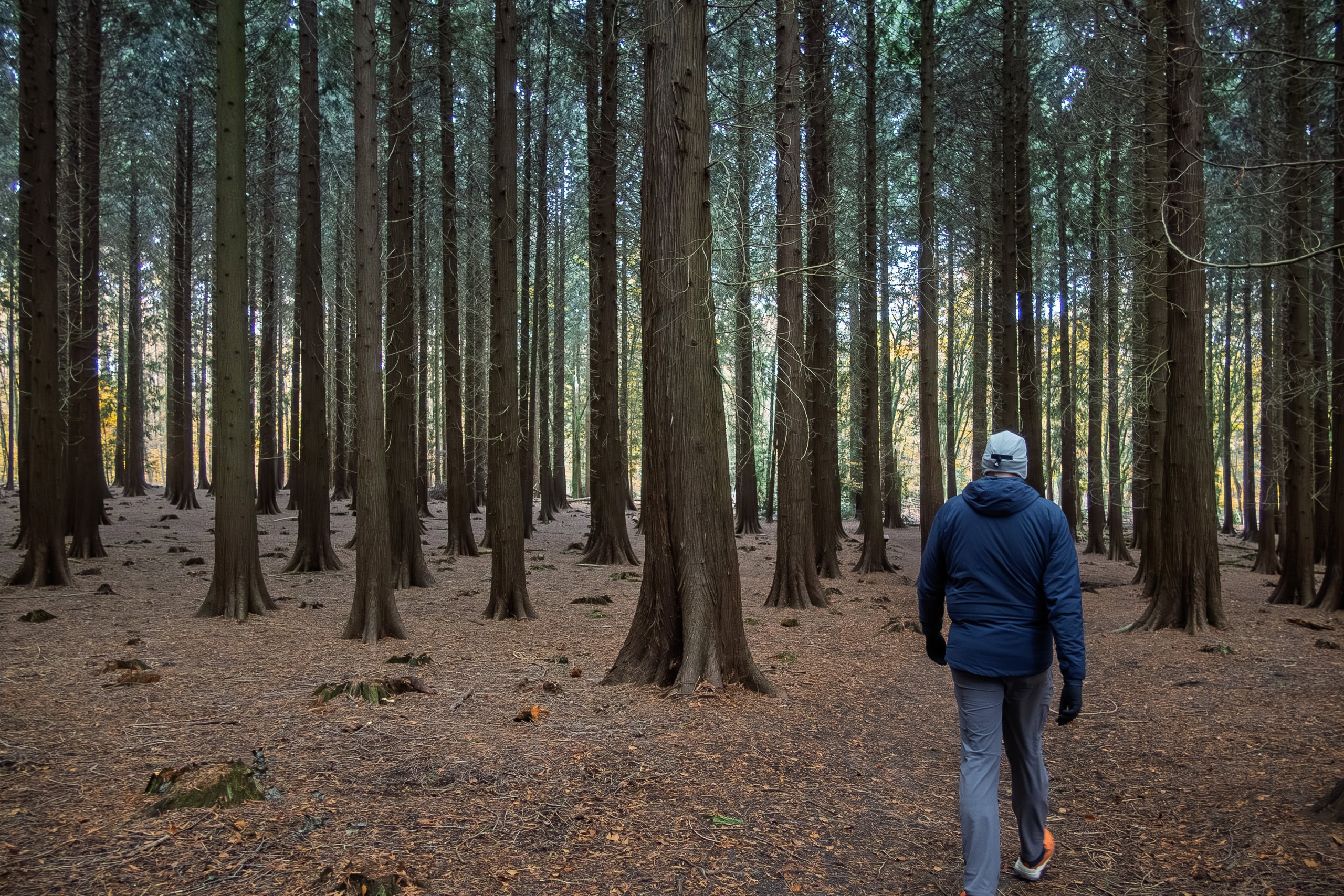
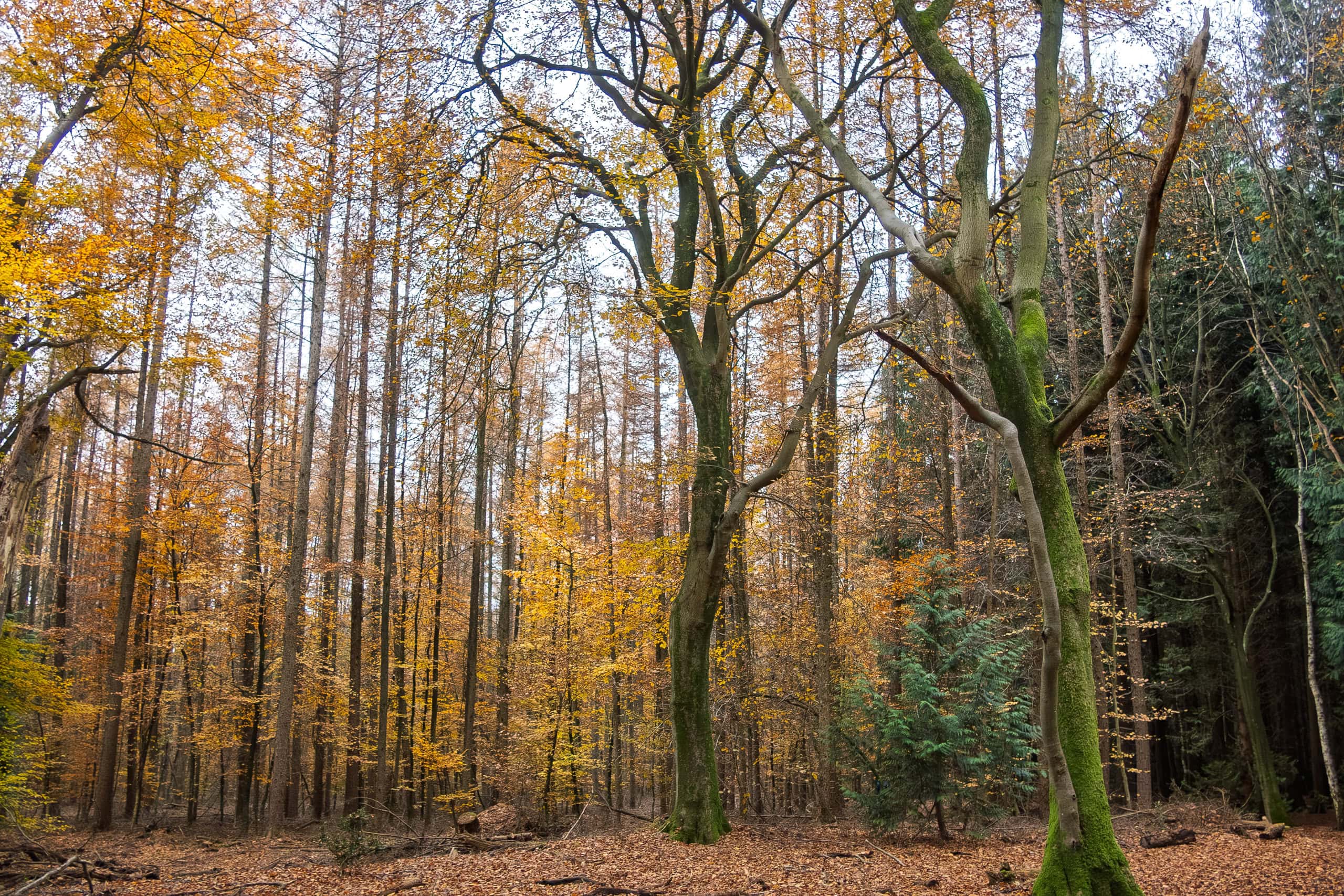
As the name “The Little Dunes Forest” suggests, the soil beneath the fallen leaves is sandy. Without the cover of grass and shrubs, the landscape would likely resemble a sea of small dunes rolling gently across the forest floor. Thanks to them, this trail offers something rare in the Netherlands: elevation change. However slight or brief the slopes may be, in this remarkably flat country even a modest rise and fall feels precious — a reminder of how simply walking uphill and downhill can bring such quiet joy.
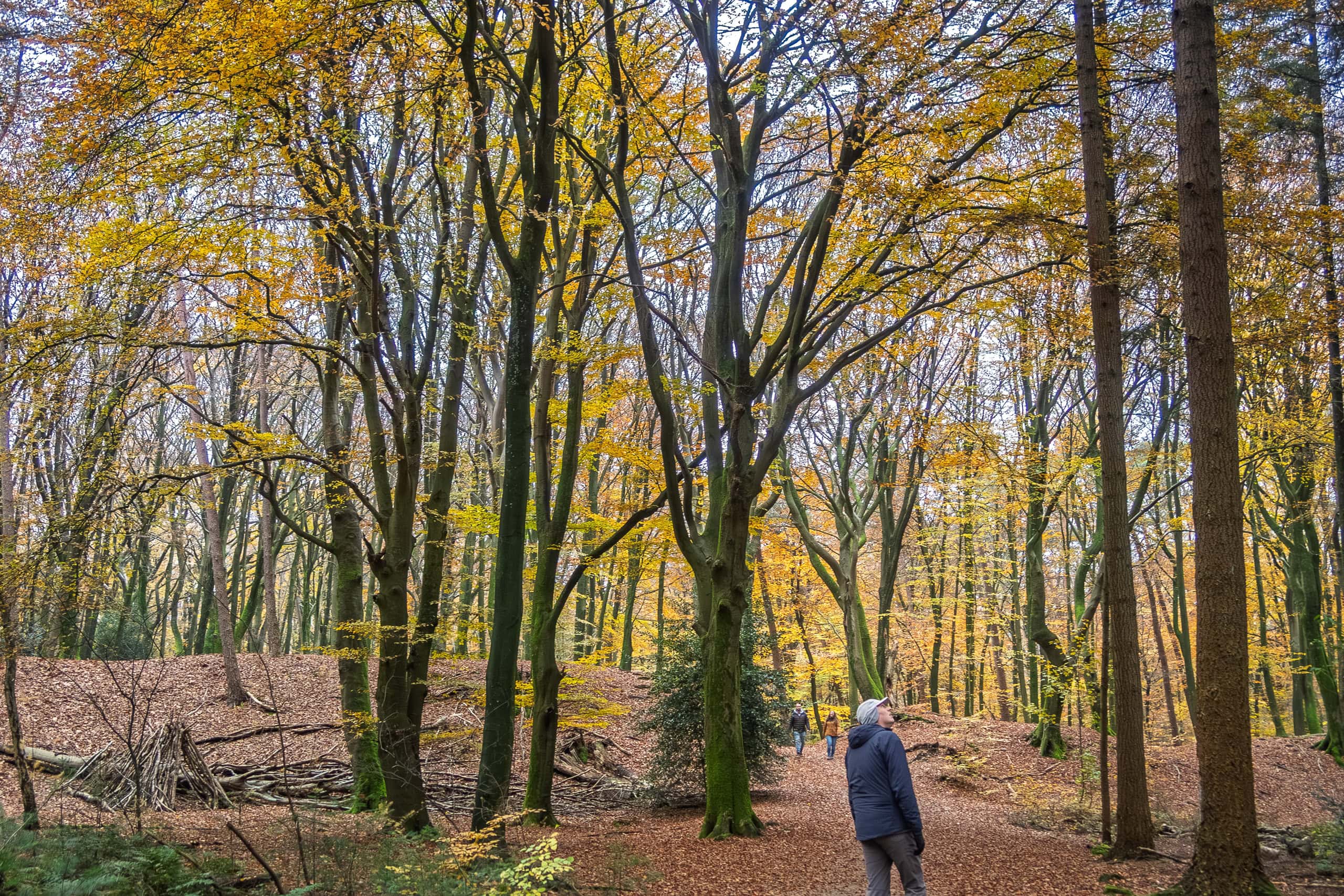
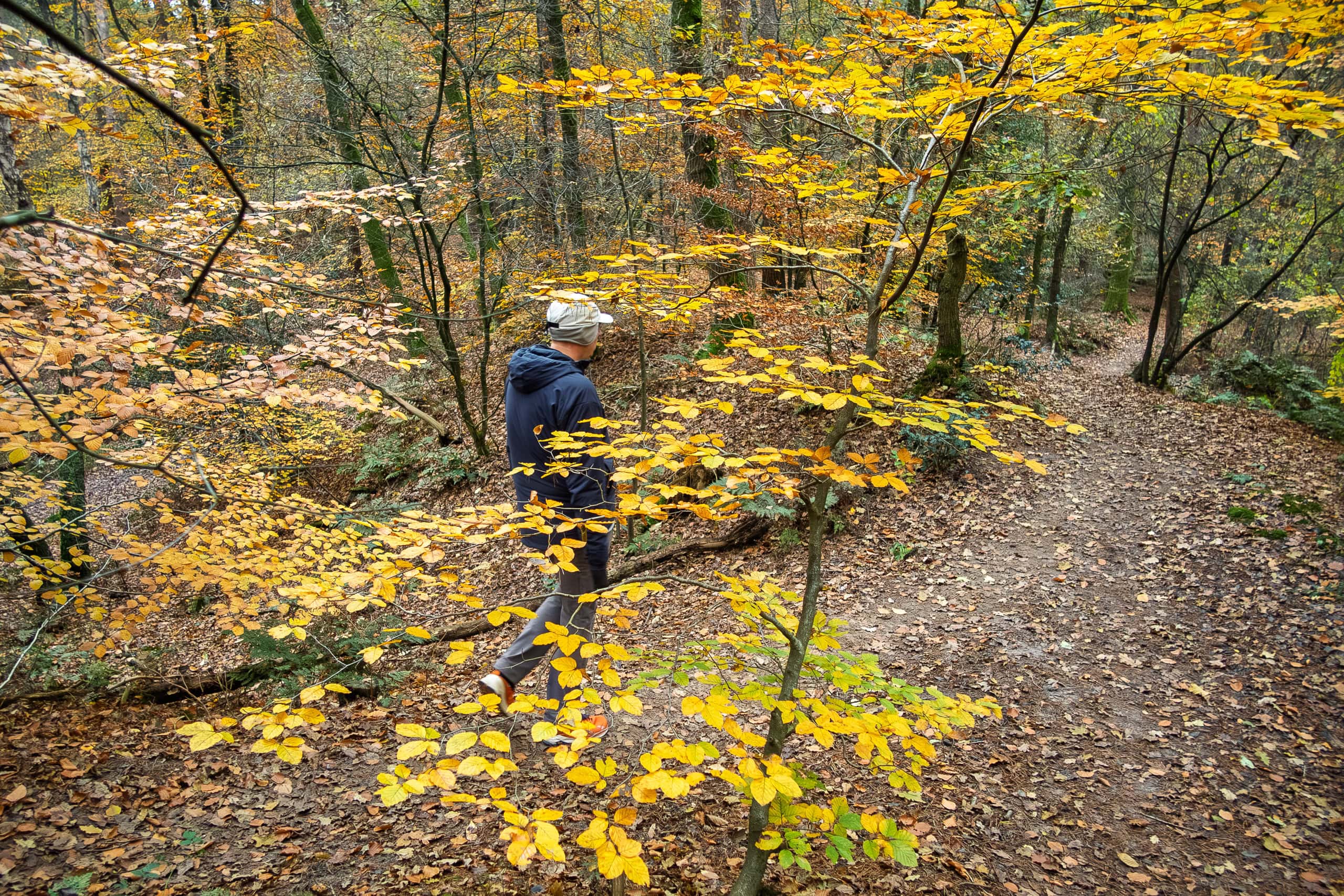
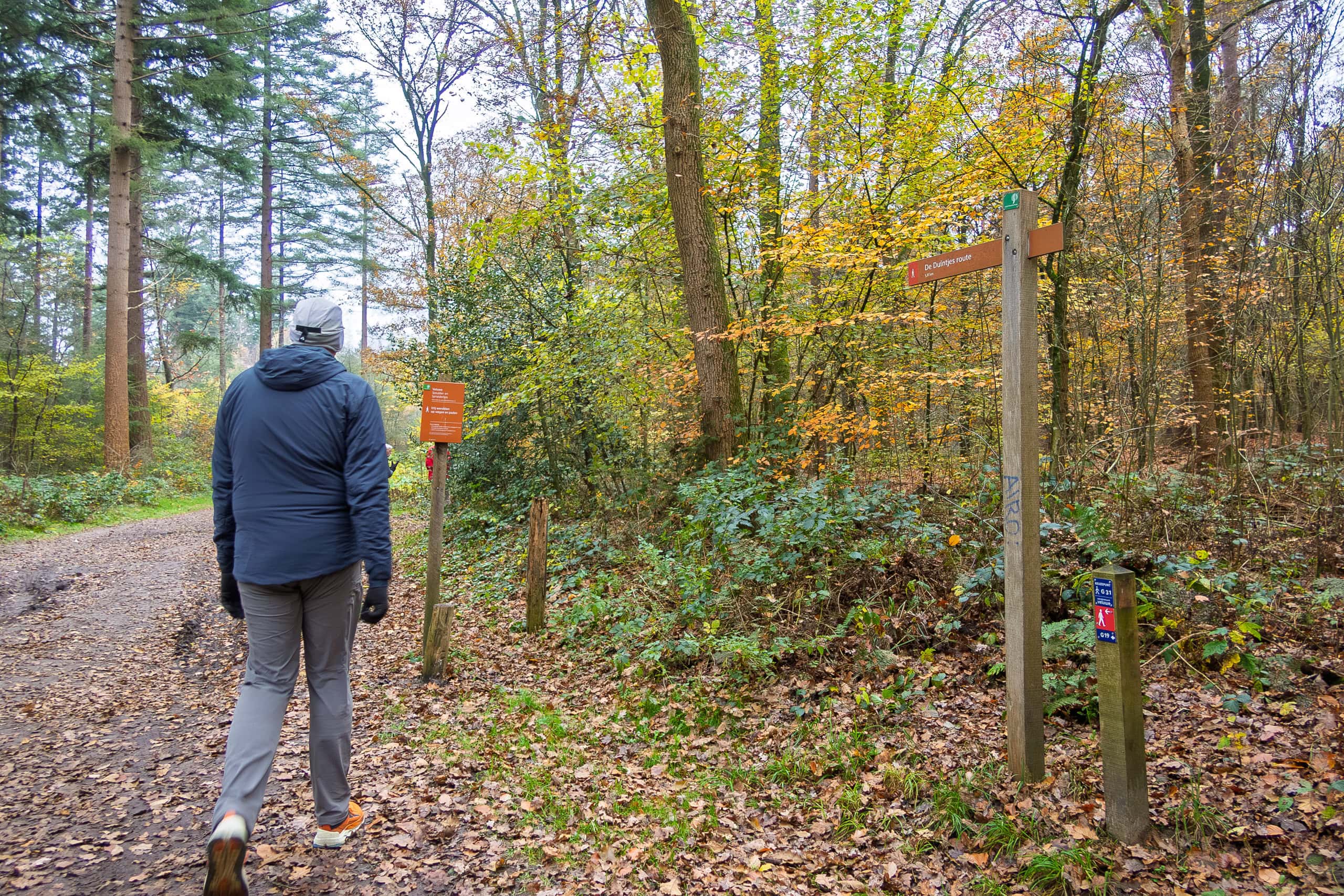
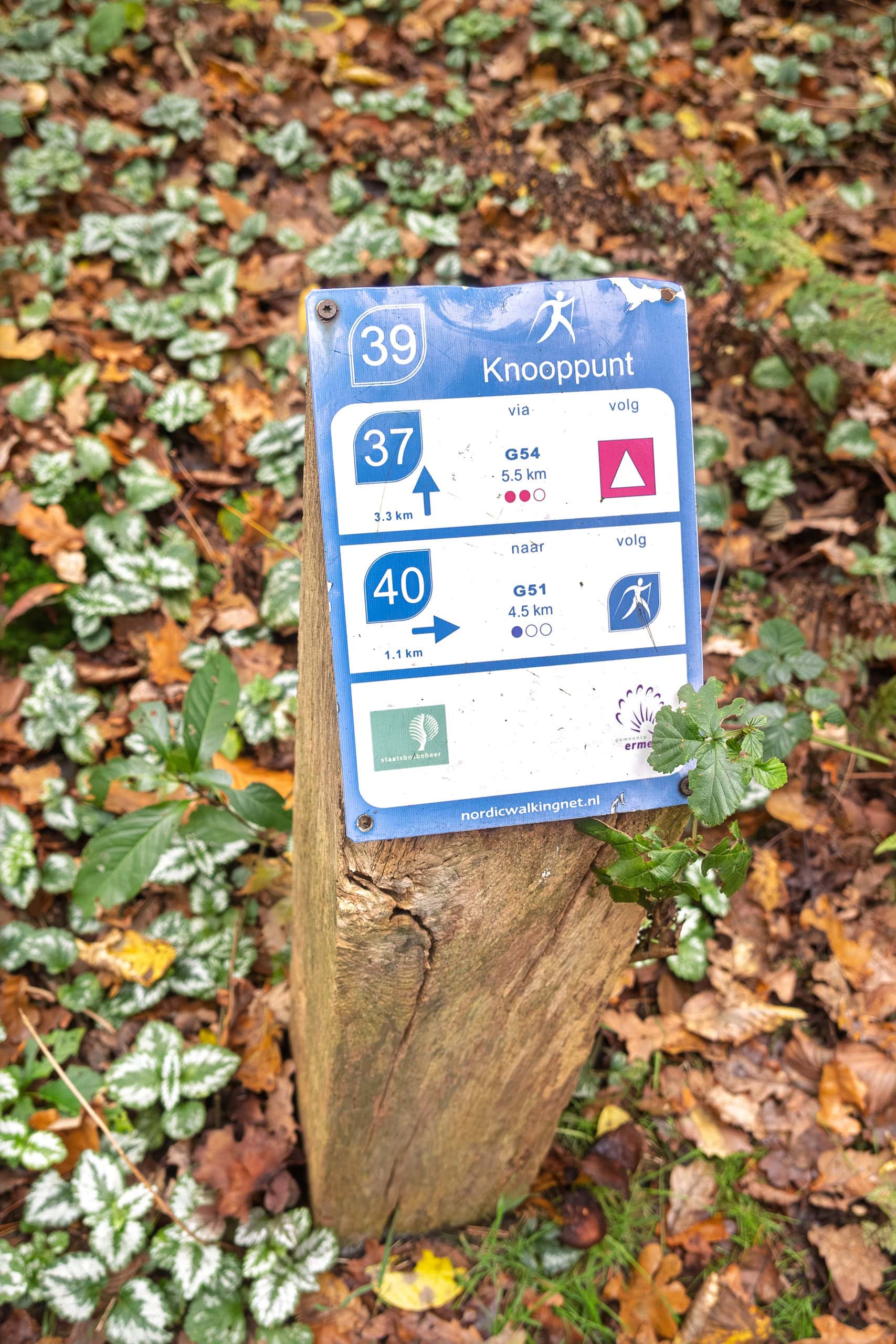
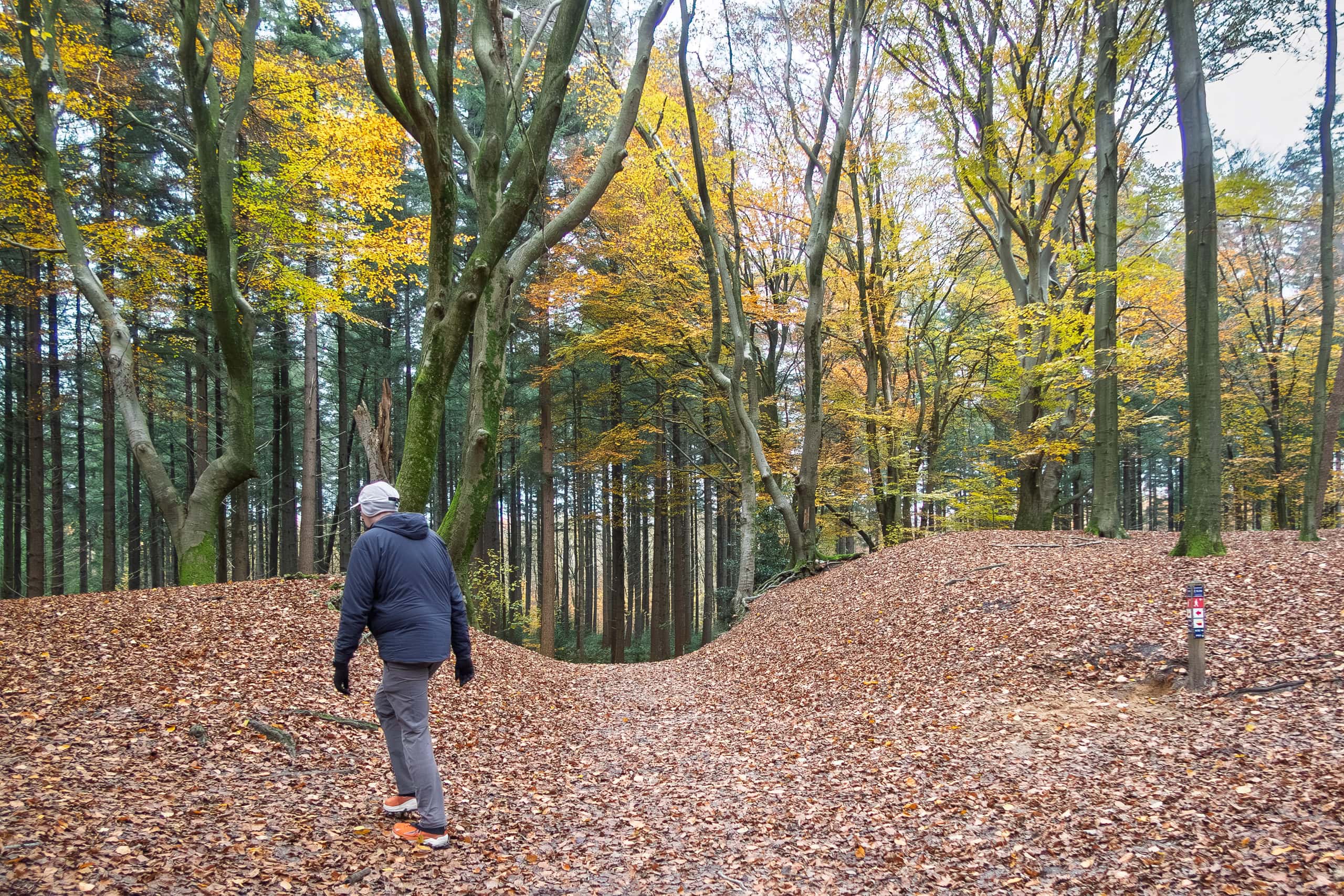
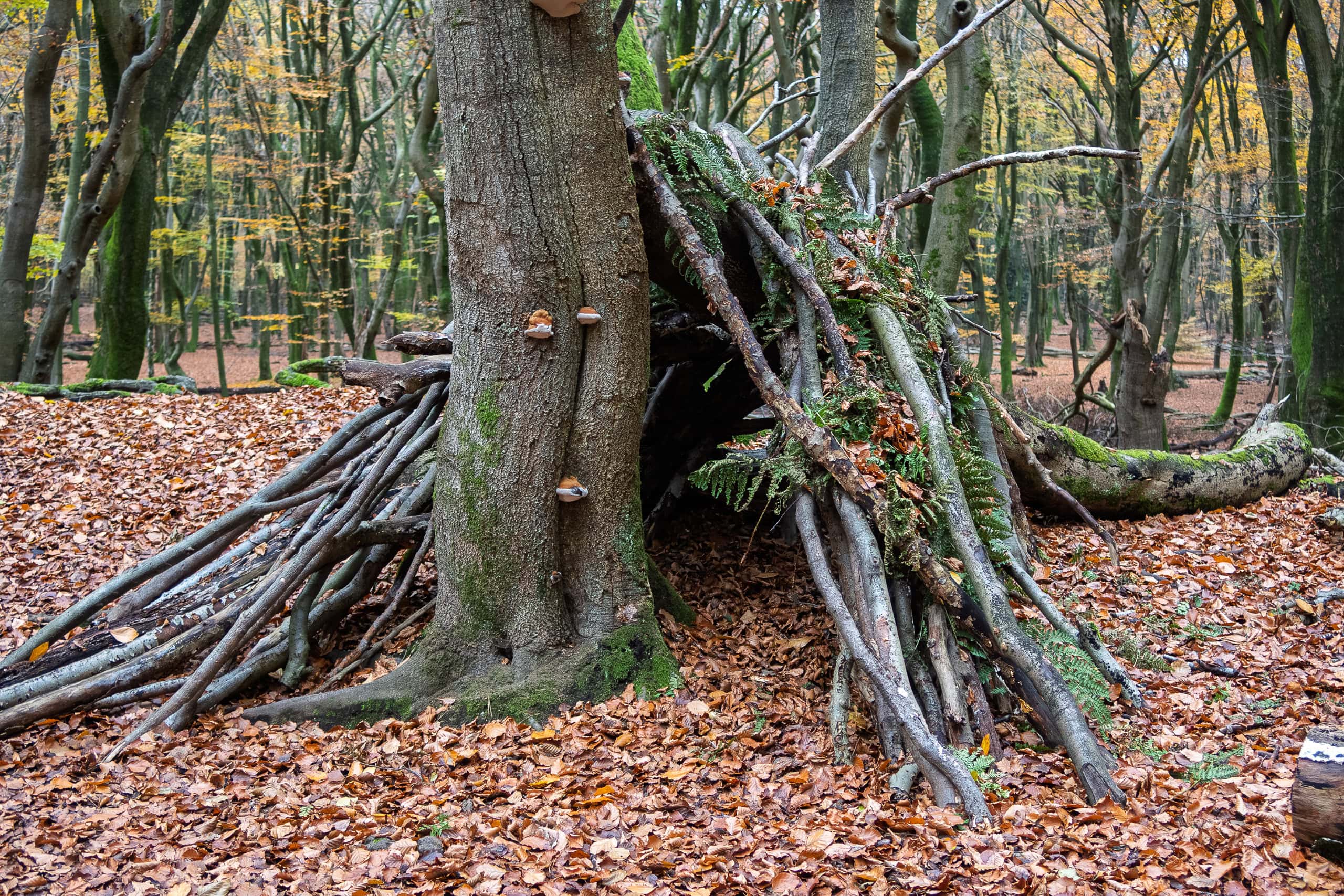
The trail appears on the Dutch National Forestry Service’s website, so it’s likely one of the first routes people find when they search for “a walk nearby” during their forest weekends.
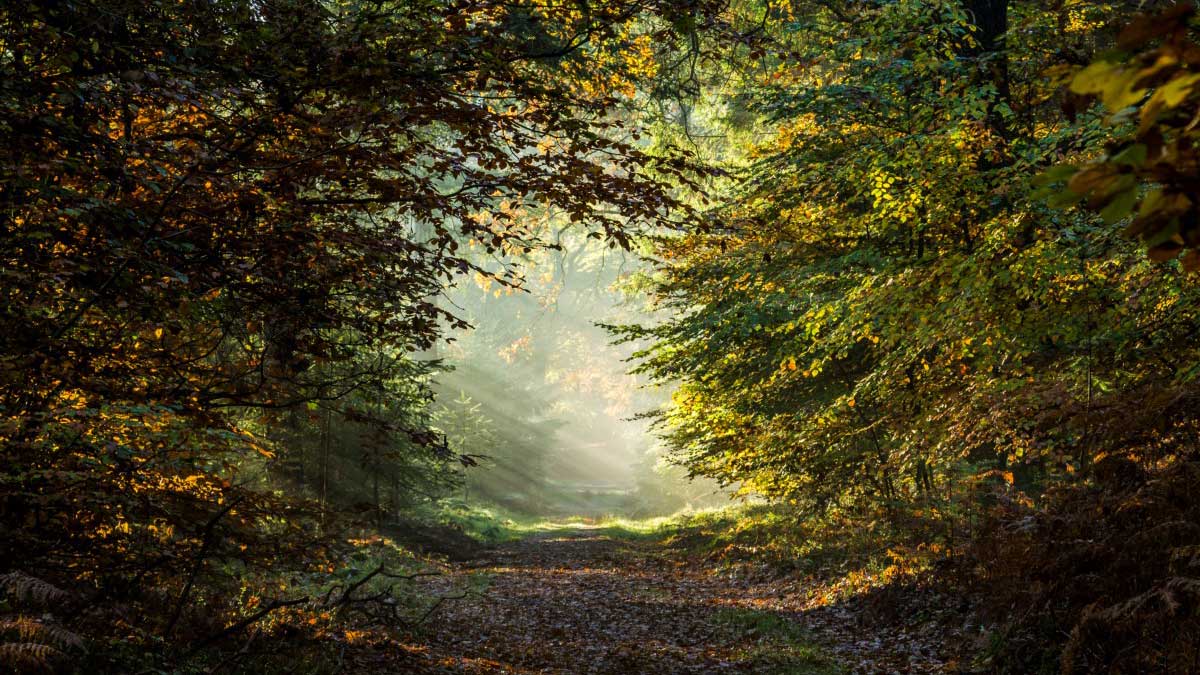
Several narrow paths weave through the woods, but the main loop is around six kilometers — ideal for a casual ramble. Since it was the weekend, we crossed paths constantly with other walkers: couples, families, and groups of friends. It’s something easy to forget when you live in Dutch cities, but traditionally, Dutch people love walking in nature — in forests, meadows, and open fields.
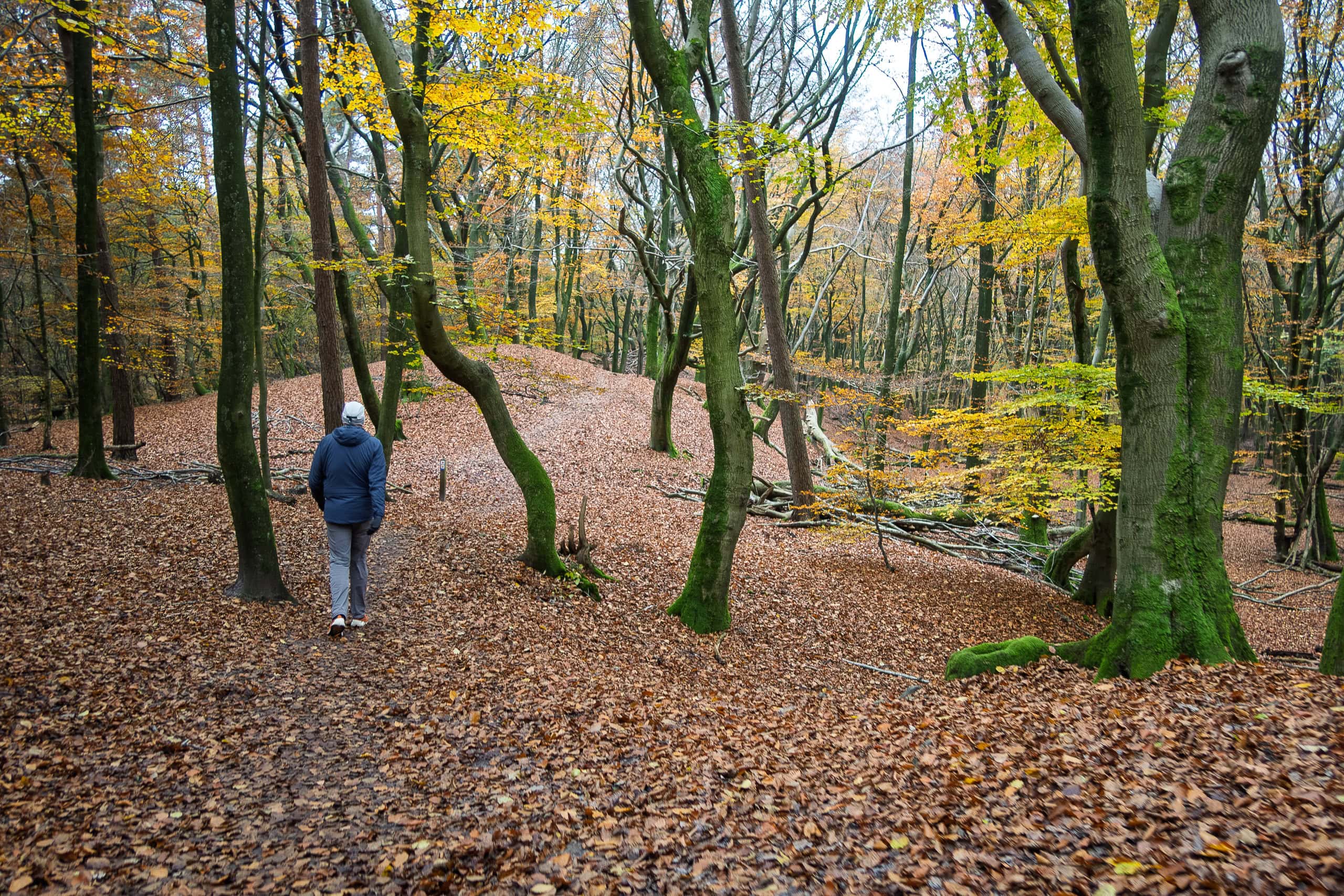
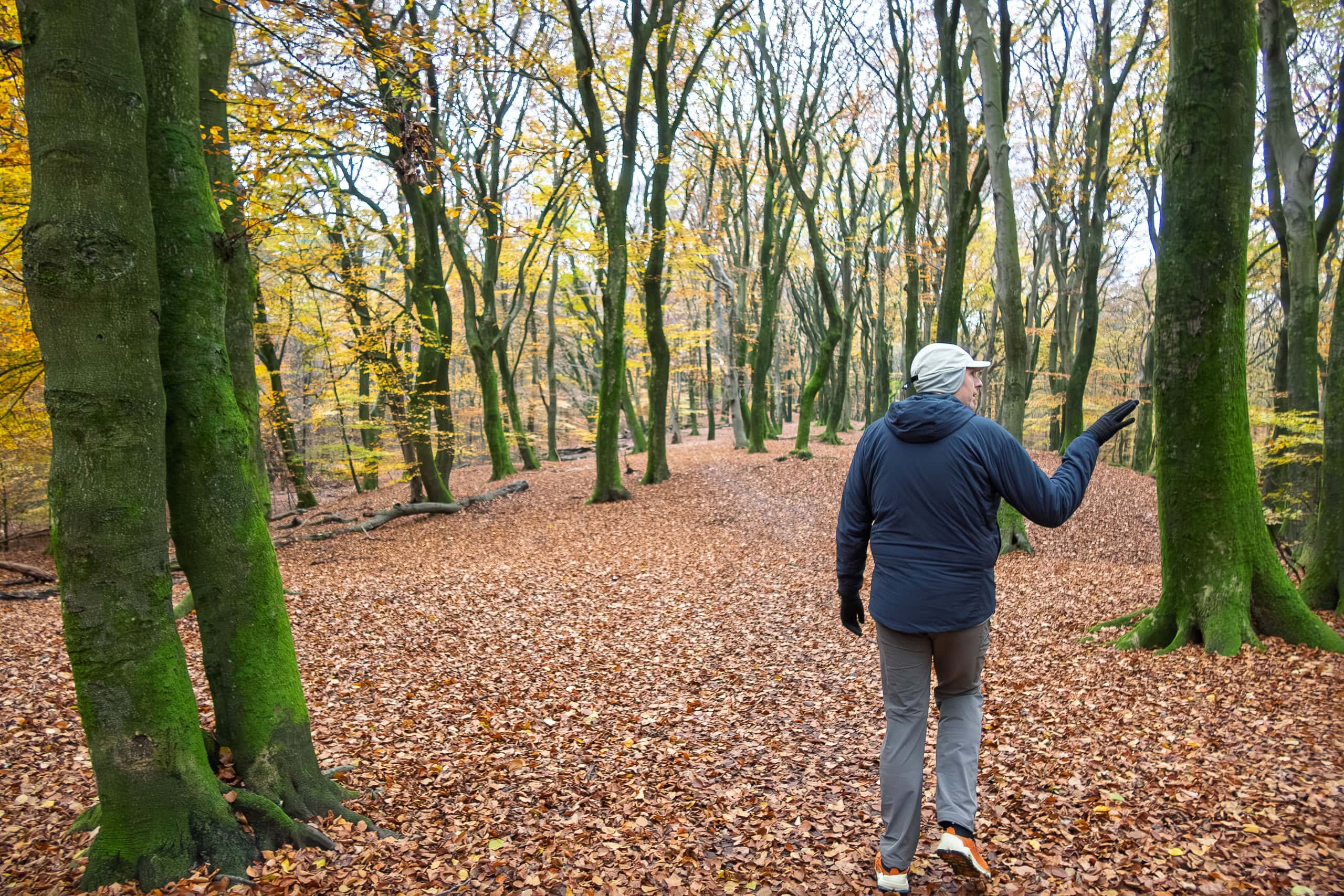
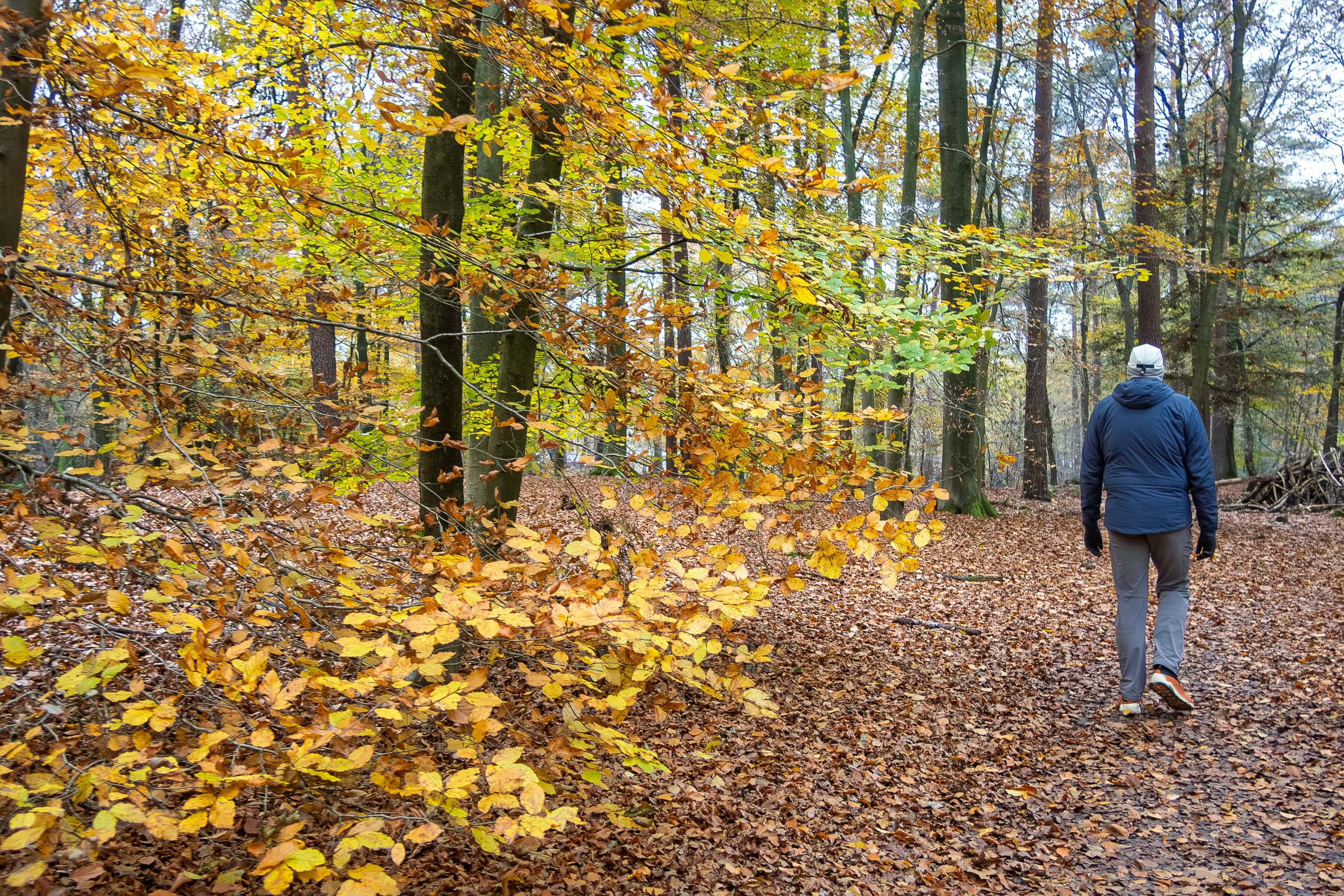
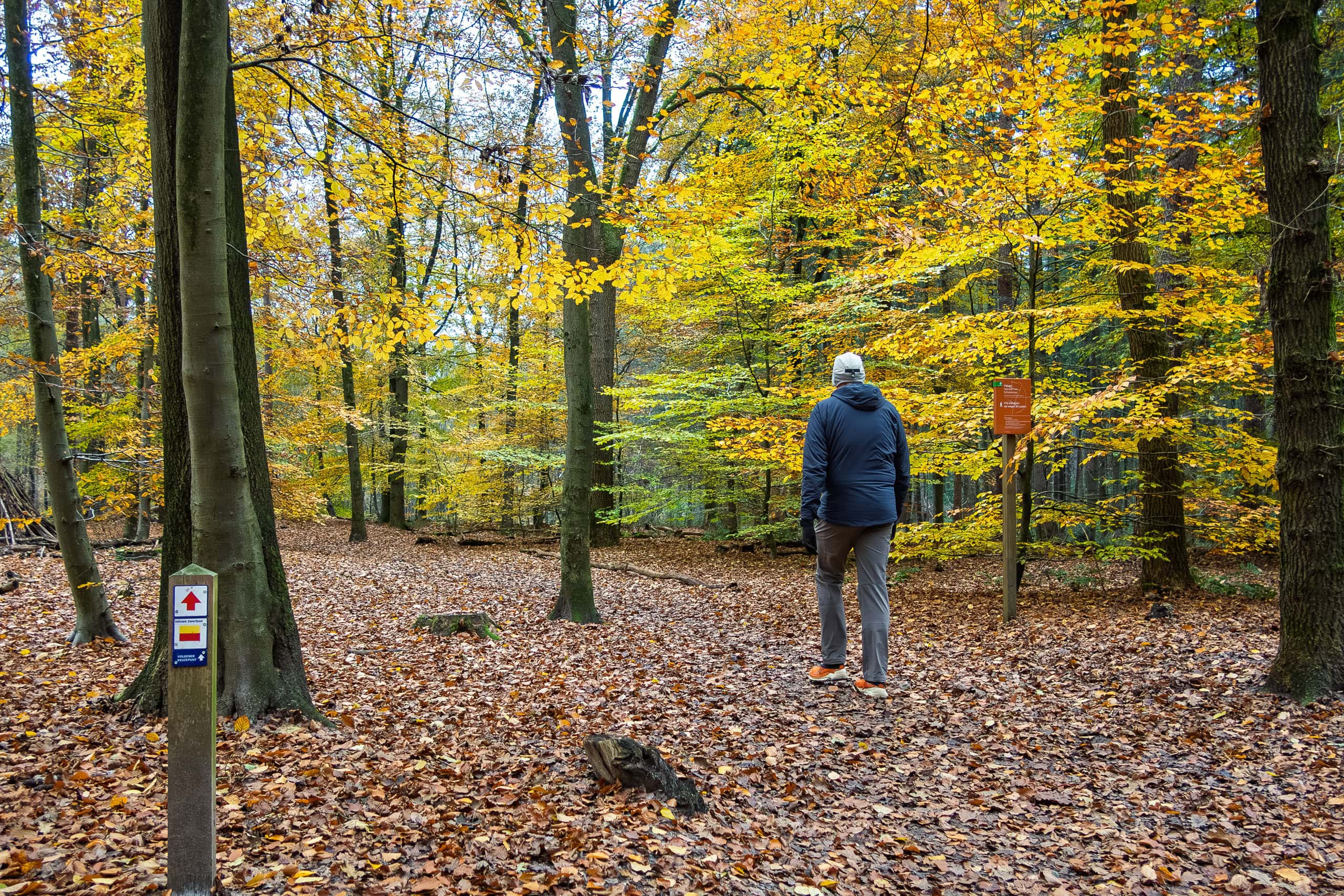
In the crisp air — the kind so quiet you can almost hear it — we enjoyed a tranquil hour before returning to our cottage. At a local restaurant, we ended the day with a perfectly autumnal meal: a thick, grilled mushroom steak.


De Duintjes Trail
| Distance | 5.8 km |
| Elevation Gain/Loss | 26 m / 26 m |
| Time | 1 h 35 m |
| Highest/Lowest Altitude | 52 m / 0 m |




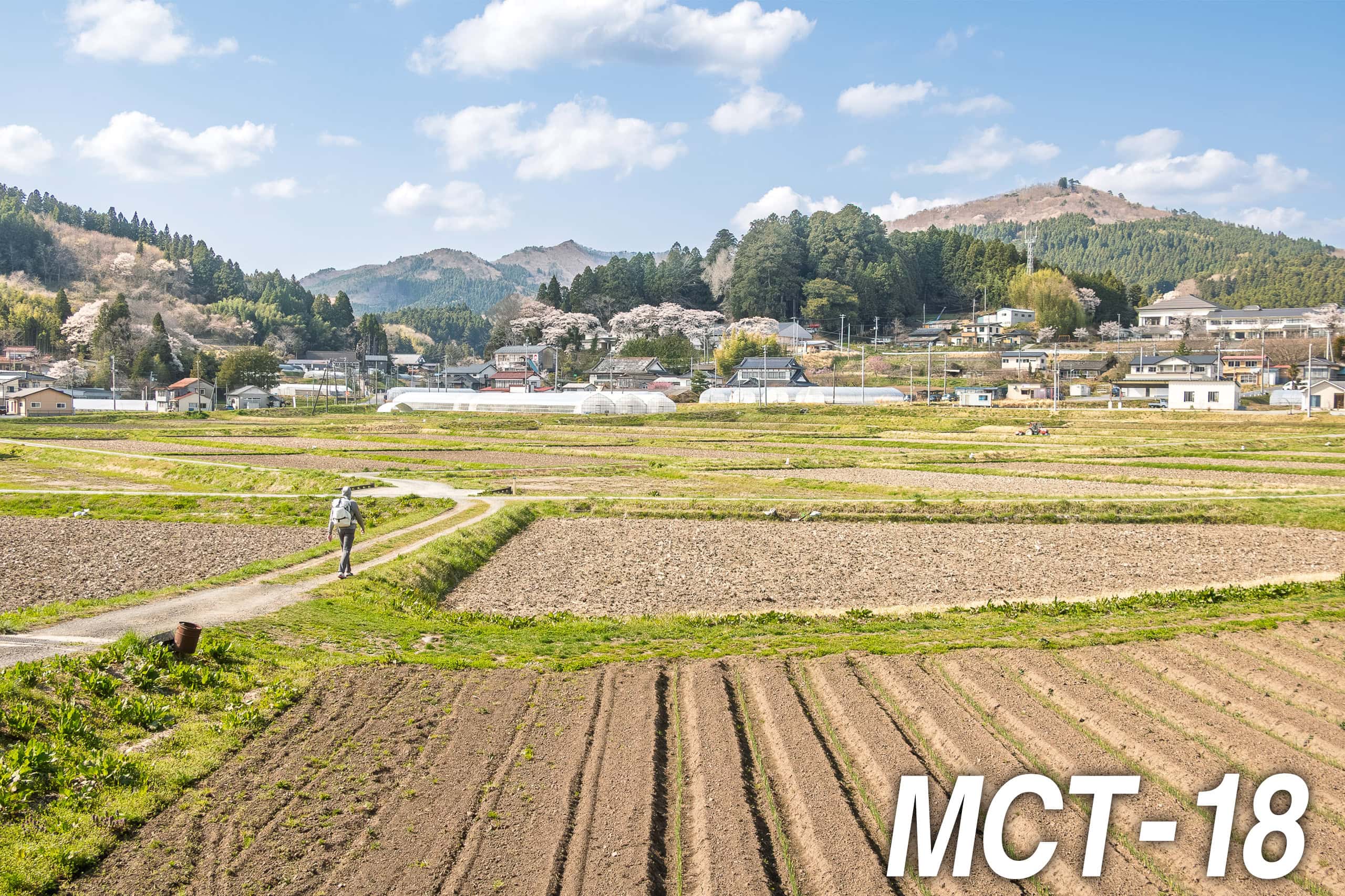
Comments